| BLACKBOARD III | |||||||||||||||||||||||||||||
|
***************************** "There never was a time when I did not exist, nor you, nor any of these kings. Nor is there any future in which we shall cease to be."
"That which is non-existent can never come into being, and that which is can never cease to be."
"Before Abraham was, I am."
"Energy can neither be created nor destroyed." "Mind and intelligence are woven into the fabric of our universe in a way that altogether surpasses our understanding."
"The bottom line for mathematicians is that the architecture has to be right. In all the mathematics that I did, the essential point was to find the right architecture. It's like building a bridge. Once the main lines of the structure are right, then the details miraculously fit. The problem is the overall design."
***************************** 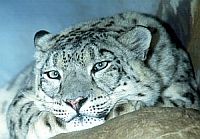 It'll come to me. Sooner or later. It always does. I just need a little something to chew on.
It'll come to me. Sooner or later. It always does. I just need a little something to chew on.
Everybody must be familiar with the Dirty Harry series starring none other than Clint Eastwood. But, has anyone really thought about what actually made those movies so popular? I'm thinking it was the unequaled 44-Magnum revolver he carried -- the most powerful handgun in the world. I mean, imagine if Dirty Harry Calahan had packed an ordinary Glock 9-millimeter like the kind cops and detectives carry on TV shows nowadays. Would Dirty Harry have gone beyond the first movie? I think not.
*****************************
***************************** A Tribute To A Brilliant ScientistLast autumn, Doctor Sergei A. Pevananof passed away. He was a well-known figure in the scientific community as well as a dedicated teacher, mentor and father. His unique talent was his ability to concentrate on a single thought, a lone ineffable, inscrutable idea, with an intensity and for a length of time not matched by any of his colleagues at the Advanced Genetics Research Institute in Philadelphia, Pennsylvania, a gift for which he is internationally famous. It enabled him to peel back the gossamer-thin layers of a notion; to perceive, probe and explore the subtlest of connections; and to partition into logical associations what appeared like nothing more than irrelevant nonsense to others, as though performing surgery on a gnat with nanotools. Walls and deadends to the less astute were oftentimes mere thresholds to him, leading to broader and more intricate understandings. Among a list of discoveries of monumental importance, the most recent and perhaps most significant was the determination of non-sequential genetic patterns hidden within the wilderness of so-caled junk DNA. By comparing equivalent patterns in other chromosomes, and aided by the techniques of 3-D holographic projection, he was able to ascertain instances of congruent activity, if not identical mappings, across the entire genome, indicating a redundancy of functional complexes hitherto not even imagined. Moreover, these patterns were seen to be scale invariant, emerging acausally and expanding to larger fractal versions based on multi-chromosomal arrangements, eventually growing to encompass the whole of the genome as though it were but a single collective unit hosting a dynamic genetic attractor.
Springboarding on this discovery, Doctor Pevananof demonstrated that such transformations generally initiate a cascade of similar linear rearrangements in other chromosomes as well, altering complexes of non-sequential patterns as though translated through some invisible medium or pervasive force presently unknown, a signal sent as output in a series of successive stages having a cumulative emergent effect. What triggers the selection process itself remains a deep mystery currently undergoing intensive investigation. No rational biochemical interpretation has thusfar been postulated as to the reason for such elaborate unpredictable behavior, at least not one of a plausible nature. In numerous papers, possible explanations have been put forth. They range from the imposition of the hypothetical supervening morphogenetic field down to the equally conjectured sub-quantum waveform decohering and reassociating, but so far no consensus has been reached by the scientific community; they are still fumbling in the dark. What their purpose is, and why the genetic components involved in the pattern formations shift loci -- what requisite conditions are responsible -- while yet retaining a homomorphically consistent architecture, is not yet known. And, as often happens, thanks to the original insight, a psychological barrier of sorts has been breached. As a result, component-based constellations, previously believed non-existent, have been spotted throughout the human genome. Excitement reigns in the evolutionary, biologic, and medical worlds. Major breakthroughs of this caliber come once in a generation. And this once occurred thanks to the perspicacity, courage, passion, and undaunted confidence of Doctor Sergei A. Pevananof, world-class biophysicist of unequaled rank. He will be sorely missed.
***************************** AmericanaBilly Bob was buried with his TV remote snugly tucked in his right hand, resting contentedly over his heart. His wife, Jenine, pragmatic to the end and beyond, had the foresight to remove the batteries before the casket was closed. "Ain't gonna be needin' 'em no more where he's a-goin'," she was heard to say. Love, redneck-style.
*****************************
***************************** Stray Cats Stray cats are a breed unto themselves, regardless of variety. I'm familiar with stray cats; I've become close friends with two of them at different times. Because of the way they were as individuals, the first I was the closest to, the second, not so much. It's all about trust, building it slowly, plateau-like. First comes the food, of course. Outside in the beginning, then when a certain level has been crossed, moved inside with the door left open for quick escape. You don't want them to feel trapped. One day, however, you close the door to see what happens. Trust is the key. Petting, affection, caring over time. More thresholds are passed. Walking around outside, he follows you, walks beside you and sometimes in front. Closeness grows, friendship.
Stray cats are a breed unto themselves, regardless of variety. I'm familiar with stray cats; I've become close friends with two of them at different times. Because of the way they were as individuals, the first I was the closest to, the second, not so much. It's all about trust, building it slowly, plateau-like. First comes the food, of course. Outside in the beginning, then when a certain level has been crossed, moved inside with the door left open for quick escape. You don't want them to feel trapped. One day, however, you close the door to see what happens. Trust is the key. Petting, affection, caring over time. More thresholds are passed. Walking around outside, he follows you, walks beside you and sometimes in front. Closeness grows, friendship.Fear always stays with them, however. After all, they've been reasonably traumatized by the whole experience of being on their own, trying to survive in the environement with racoons, dogs, other stray cats wilder still and, of course, mean-spirited people. But what I've noticed with both cats of my experience, who were very differnt in personality, intelligence and temperament, was that with attention and caring, with feeling wanted and loved, they would begin to take care of themselves better than they had when alone and lost and fearful. They would clean themselves meticulously, carefully, and with calm deliberation. They even carried themselves with a dignity and self-possession they didn't formerly display, as though they knew they were worth something. There's a lesson here that is the point of all this. It goes for human beings as well. People who have been cast adrift by society or family and friends, or have found themselves alone and feeling like outcasts in a world of unfriendly people, respond similarly to care and attention, to affection and consideration. They begin to take care of themselves better; perhaps for the first time in memory. We all need that on a daily basis, in fact. Self-respect and a desire to do something with one's life beyond merely surviving and existing are nurtured through friendly, mutually respectful interaction with others. I've seen it happen with stray cats, and I know it also does with stray humans.
One thing though, no matter how used to a person a formerly stray cat gets, he never loses the feralness that came to the fore when he was on his own, dealing with a hostile environment. He'll always keep one foot in that world, never fully relinquishing it. Once you become aware of your wildness, it never goes completely away. I see that as a good thing, for both cats and people.
*****************************  I was looking at a website -- Extreme Science -- where they had a brief BBC video on Blue Whales. I like whales -- most people do -- and I've seen quite a few of them -- Humpbacks in Prince William Sound -- so I watched it. Afterwards, I decided to get a picture, so I did a Google search. The picture I liked most led to a website called True Wild-Life which is a blog of sorts that is interesting and informative with lots of crisp clear pictures.
I was looking at a website -- Extreme Science -- where they had a brief BBC video on Blue Whales. I like whales -- most people do -- and I've seen quite a few of them -- Humpbacks in Prince William Sound -- so I watched it. Afterwards, I decided to get a picture, so I did a Google search. The picture I liked most led to a website called True Wild-Life which is a blog of sorts that is interesting and informative with lots of crisp clear pictures. About Blue Whales that was stated in the video: "The blue whale's heart is so big that it is around the same size as a small car, with the blue whales main arteries being big enough for a human to swim through comfortably." Bizarre and wonderful!
***************************** The Dot Product -- Inner Product Space
If u = (x1, x2, ..., xn) and v = (y1, y2, ..., yn), then the dot product is defined by
For n = 2 we can show that where θ is the angle between the arrow representations of u and v, and |u| = √u • u is defined as the length of u. So, if the angle between u and v is an odd multiple of π/2 (90 degrees), then u • v = 0. This is how we show orthogonality. That is, a collection of vectors is an orthogonal set if the vectors are mutually perpendicular; that is, if u • v = 0. And an orthogonal set is orthonormal if each independent vector is divided by its length.
Formula 2) If v1, v2, ..., vkis an orthonormal set and
then c1 = u • v1, c2 = u • v2, ..., ck = u • vk.
We shall give the proof of this statement only for the case k = 2. Suppose v1 and v2 are orthonormal and
We take the dot product of both sides with v1 and perform some elementary manipulations:
By assumption, v1 and v2 are orthonormal, and we can therefore substitue the relations v1 • v2 = 0 and v1 • v1 = 1 to obtain c1 = u • v1. A similar argument, using v2, shows that c2 = u • v2. If |v| = 1 then, by an application of formula (1), the projection of u onto v is (u • v)v; therefore, by formula (2):
of the orthonormal vectors v1, v2, ..., vk if and only if u is the sum of its projections onto each of the vi . [From textbook on Linear Algebra]
Homomorphisms of Inner Product Spaces account for, or correspond to, all possible bases eigenstates [superposition]. Inner automorphisms (self-isomorphic maps) represent all possible configurations of any given wavefunction of a system. What does this have to with Galois Theory? A Galois group is one of automorphic maps. Is the hierarchy of extended fields equivalent to a composition series of factor groups, that is, homomorphisms?
Luc Steels writes: "A component has a particular functionality but this is not recognizable as a subfunction of the global functionality. Instead a component implements a behaviour whose side effect contributes to the global functionality. Each behaviour has a side effect and the sum of the side effects gives the desired functionality." (Steels: Towards a Theory of Emergent Functionality, 1990) "In other words, the global or macroscopic functionality of a system with "emergent functionality" is the sum of all "side effects" of all emergent properties and functionalities." Jeffrey Goldstein, in the journal Emergence, defined emergence as: "the arising of novel and coherent structures, patterns and properties during the process of self-organization in complex systems." (Wikipedia on Emergence)
Per his definition of emergence, Peter Corning also addresses emergence and evolution:
A vector space is spanned by its independent basis vectors. These components, through their interaction and interconnectivity, generate the whole of the space synergistically. Any single point contains the potentiality of the emergent property; that is, of being more than just a separate part. It's the mixture of these parts that produces the functionality of the entire vector space. Without the synergistic effect underlying the complexity of the whole, generated by the dimensional interdependence and "co-operation" of the entire set of basis vectors, the projections -- or "side effects" -- understood as individual emergent properties, would not collectively contribute to the macro identity of the space/system itself.
"On the other hand, merely having a large number of interactions is not enough by itself to guarantee emergent behaviour; many of the interactions may be negligible or irrelevant, or may cancel each other out. In some cases, a large number of interactions can in fact work against the emergence of interesting behaviour, by creating a lot of "noise" to drown out any emerging "signal"; the emergent behaviour may need to be temporarily isolated from other interactions before it reaches enough critical mass to be self-supporting. Thus it is not just the sheer number of connections between components which encourages emergence; it is also how these connections are organised." There must be meaning on the global level. Say you have a 1,000 piece jigsaw puzzle. You dump it on a table, a disorganized randomly associated pile of pieces. The end picture that appears on the box is that of the Taj Mahal. That is what represents the global emergent property, and it can only be realized when all the pieces are put in precise proximity to one another. Only then. So, as with a strange attractor, just having a significant threshold of energy passing through a material system is not, in itself, sufficient to generate an attractor -- the individual vortices must be in a proper interdependent relation with one another -- "a large number of interactions is not enough to guarantee emergent behaviour." "The complex behaviour or properties are not a property of any single such entity, nor can they easily be predicted or deduced from behaviour in the lower-level entities: they are irreducible." This is an interesting observation, especially when put in the context of the evolution of any particular, sufficiently complex organism. One of the arguments for Intelligent Design stipulates that a subtle sub-system, say, for instance, the blood-clotting system, of a human being could not have had its many parts evolve independently and then magically coalesce to produce such an intricate and elaborate mechanism for clotting blood. It's considerd an irreducible, a dynamic entirety in and of itself, whole and complete, coming into existence as one, at once. Hence: God did it. A counter to this presumption is the existence of what Doctor Franklin M. Harold calls the Morphogenetic Field. It orchestrates and organizes the general shape of a cell, localizes position for all its sub-units -- of which there are thousands in the case of a human cell -- and regulates their integrated functionality and coordinates relationships on all scales and betweeen scales simultaneously. So, assuming the truth and reality of this field as a natural causal agency of emergent properties, we have to conclude that the finished cell comes into being from the top-down. That is, the cell and its intended function exists as an abstract template -- in meta-information space -- prior to the parts which constitute it. In other words, it exists unto itself, and because of this, creates life synergistically with all the inteconnecting and interdependent components acting as potentials. Thinking of the morphogentic field as an emergent property itself, doesn't really do it justice. It's more like a law dictating the global properties of a complex system that would not emerge were it not for its purposeful oversight. But perhaps even law is too strong or misleading, too independently existing and fundamental sounding. According to Doctor Harold, it acts as an intermediary, guiding genetic expression through biochemical processes to the final form and function of a cell. So, in that sense, in the sense of coming into being as an effect of expression, we could say it is an emergent property, something that exists thanks to the combined working of its respective, pre-existing, basic components. But, it also takes on a life of its own insofar as it continues to maintain governance over structural integrity and metabolic efficacy for the lifetime of the cell. On a purely physical, non-organic plane, the morphogenetic field behaves similarly to a magnetic field dictating the arrangement of a handful of iron particles thrown into its influence. The configuration is the emergent property. However, in this simple example, the final geometric shape is predictable, which cannot be said of emergent properties in general where unlike components work together to effect a pattern indeterminable from examining the parts. "We can now see that the whole becomes not merely more, but very different from the sum of its parts." (Philip W. Anderson -- Nobel Laureate in Physics) In some circles, consciousness is considered an emergent phenomenon. Is it not also top-down? Or rather, to use the current jargon -- supervenient? Suppose it were true that the nature of the cosmos is intrinsically one of consciousness the Mind -- seeking or creating organic units through which and by which to express itself. Negative feedback in constant tandem with positive amplification. The principle of evolution orchestrated by the conscious mind that is, in a very real sense, the universe at large. New unpredictable emergent properties of a whole interacting with same of another, mutually disjoint, whole, synergistically can produce yet another set of emergent properties equally unpredictable and unprecedented. In fact, the unpredictability factor increases exponentially. How then could we reconstruct the universe from knowing a handful of fundamental laws? Arthur Koestler said as much. In mathematics: all complex groups are constructed from the products of simple groups. And by simple is meant nondivisible, irreducible, prime -- a whole unto itself.
For a genuinely interesting and clearly written article on emergent phenomena, among other related concepts, check this out, especially if you have an interest in molecular biology. The primary author, of which there are three, is Professor Emeritus Bernard Testa
*****************************
***************************** Rite of PassageIt was a hot summer night in Philly. Franky Razelli pulled up in his 1970 Camaro and waved me over. I'd been holding down the corner by myself for close to an hour and was getting pretty bored. "Get in," he stated matter-of-factly, a six-pack next to him. I complied; after all, it was Franky Razelli. We drove down Garret Road and on out to the toolies before he offered me a beer, still not having said a word. He liked company but wasn't much on conversation. Besides, he was in one of his moods; you could tell by the way he was driving. Five miles into West Chester, what we referred to as "the country," Franky turned left at a crossroads and down a steep grade that ran across a shallow creek and up the other side. The canopy was so thick, no stars could be seen, the road barely wide enough for two cars. We made a sharp right and found ourselves crossing a field, maybe a farm, couldn't be sure in the dark. Behind us I could hear the distant sound of another car coming up fast. Franky didn't let on, concentrating on the sharp turns, shifting gears, pretending he was Parnelli Jones. However, our pursuer was gaining, brights flashing off and on. Franky ignored him. With an unexpected rush, an old pick-up, 50's vintage, roaring for all it could muster, pulled alongside, squeezing us over to the point where the high grass of the field's edge slapped against my arm resting on the door. The fat-faced passenger yelled at Franky, "What the hell you punks doin' here? Piles of shit! Get the fuck out o' here or we'll kick your asses. Now!" I stared passed Franky at the fat-face, trying to look intimidating, although I suspected he probably couldn't see my face very well in the dark. Franky continued to ignore them, looking straight ahead, painfully serious and apparently unconcerned. At that, the driver called Franky a chicken-shit wop and then tried to push us off the road, coming close enough to touch. That was it. People have called Franky a wop in the past, good-naturedly and sometimes not, and gotten away with it; he would just laugh. But nobody bumped his Camaro. Franky reached under his seat, pulled out a 38-revolver and fired three quick shots directly at fat-face, then one at the driver. Their pick-up abruptly accelerated and careened off to the left, went down a grassy slope, got its left front wheel lodged in a hole, flipped over, rolled twice landing on its top, then burst into flames as we pulled away, the fire revealing that the field was filled with high corn. As we screeched around a corner, Franky turned to me, his face contorted with an excited smile and said, "I guess that'll teach those morons, huh, Tommy?" And then he laughed for the first time that night, laughed and popped a can of beer. We drove around for awhile, the radio playing Beetle's tunes, listening to the muffled sound of distant sirens. What seemed a long time later, Franky dropped me off at the corner with a casual, "Take it easy, man." And that was all. He vroomed away leaving me numb and freaked out and very confused as to what to do or think. I tried to smile knowingly as he drove off, but he'd already forgotten me. Just as well, I don't think I would've been very convincing, not possible. Nothing appeared as it had just a couple of hours ago. Even the Marlboro Man on the billboard across the street had transformed into a sinister gunslinger. Before tonight, I actually believed myself to be a tough street kid. I'd been in a few fights and could bluff my way through most ordinary dangerous situations. But now, I saw that there was a whole larger and scarier world out there of which I was not a member. I walked home trying to pretend like it was all just a normal night in Philly, my home town, something I should take in stride. My step-dad ran a bar for the mafia, for Christ's sake. But it was like trying to calm down a swarm of bees gone crazy in my chest. It made me see not only Franky Razelli in a new light, but everyone else in my neighborhood as well. I mean, I always saw Franky as being a really tough guy, imagining I knew what that meant, but I realized now I'd been deluding myself all along. I hadn't a clue; I'd been naive and innocent all this time; getting away with shit by the grace of God. Who are these people I'm living with, really, and what are they capable of? In fact, what am I capable of? I don't think I could ever kill anyone, not the way Franky did. But, I don't know for sure. I got over it eventually, didn't take long, surprisingly, which made me wonder about myself. I was staring right at them when Franky, you know, did what he did, and was genuinely shocked. I almost wet myself, in fact. Yet, I got over it; it wasn't too bad. So, is the potential to go off in extreme ways ingrained in me as well, invisible, just below the surface, as a result of growing up where I have? Or is each one of us unique, a special case with his own personal experiences that shape his personality and dictate how he's liable to react? I don't know. Nobody but Franky and me ever knew about that night; at least, I never told anyone. When we used to meet -- on the street, in the schoolyard to play football, in the luncheonette or one of the local bars -- we'd talk or joke around occasionally, but we never mentioned that night, not even indirectly. It's like it never really happened, and I suppose, that's for the best.
*****************************
“In painting, as in the other arts, there's not a single process, no matter how insignificant, which can be reasonably made into a formula. You come to nature with your theories, and she knocks them all flat.” A brief cultural history surrounding the painting can be found at: National Gallery of Art
“The depth and strength of a human character are defined by its moral reserves. People reveal themselves completely only when they are thrown out of the customary conditions of their life, for only then do they have to fall back on their reserves.”
“To be yourself in a world that is constantly trying to make you something else is the greatest accomplishment.” "We are always getting ready to live, but never living” “Unless you try to do something beyond what you have already mastered, you will never grow.” The Ralph Waldo Emerson Society Another valuable resource is: Ralph Waldo Emerson *****************************
Mudcracks, one example shown on the left, are sedimentary structures formed as muddy sediment dries and contracts. Anyone who's ever seen a dried-up riverbed is familiar with the picture. From Wikipedia: "Naturally forming mudcracks start as wet, muddy sediment desiccates, causing contraction via a decrease in tensile strength. Individual cracks join up forming a polygonal, interconnected network." Cracks of this nature also appear under a cooling influence. On the right, we have a picture of a mosaic of 400,00 galaxies sweeping across the sky, highlighting filamentary patterns. On its largest scale, our universe most definitely exhibits a filamentary structure, with galaxies spread out in stringlike patterns throughout space. [Picture scanned from the book SpaceTimeInfinity by Physicist James S. Trefil]. Are these two patterns similar in some way? If we imagine the cosmic riverbed cooling down -- or drying out -- spacetime depressions might result, acting as sinks or gravity wells, drawing "down" matter, both luminous and not, towards these interconnecting grooves, eventually forming a network of galaxies and supergalaxies. Below, on the left, is an extreme magnification of microbial filaments. And on the right, the somewhat random disposition of cooled lava. What I'm trying to compare is a fundamental tendency towards filamentary patterning in nature, from clusters of galaxies to dried riverbeds and cooled lava flows, to living organisms like microbes. I think we tend to focus on the geometric configuration of the polygonal islets bounded by the cracks or grooves, instead of on the interconnecting synaptic-like networks created by those interfacing boundaries and edges -- strands of complexity.
As far as mathematics goes, after a stint of graduate study 25 years ago, I was working my way through a text on algebraic topology when it occurred to me that its two main branches, Homology and Homotopy theories, which both study boundaries of polyhedra as algebraic invariants, fundamental groups, over an underlying topological space, could form the basis and context of a future physics. The elements of a fundamental group are loops starting and ending at the same basepoint, and two such loops are considered equivalent if one can be continuously deformed into the other. The fundamental group is therefore defined in terms of loops, or holes, and deformations of loops. More generally, we have a path in space or through space, a loop being a path whose initial and terminal point is the same, and any space may be broken up into a set of path-connected components. Path = crack, groove, thread, string, filament, and the collections thereof -- networks or webs -- whatever might serve to capture the sense of interconnecting system. Officially: A polyhedron P is a topological space that is homeomorphic to the underlying topological space |K| of a finite simplicial complex K. K is called a triangulation of the polyhedron P. Unofficially: A two-dimensional simplicial complex so constructed -- joining two-simplexes together -- looks very much like a dried riverbed where the flat sections are sub-divided into triangles. Can it be said that a polyhedron is an emergent global property?
"To get a sense of the scale of the problem, consider the cerebral cortex of the human brain, which contains more than 160 trillion synaptic connections. These connections originate from billions of neurons. Each neuron receives synaptic connections from hundreds or even thousands of different neurons, and each sends information via synapses to a similar number of target neurons." From: Discovering the Wiring Diagram of the Brain
"Field: a territory that displays coordinated activity controlled by the differential distribution of some property or agent. Furthermore, since the essence of a field resides in its mathematicl description, one can examine the properties of a field without knowing anything about its physical nature." "I take the position... that a spatially extended dynamic field generated by the cell as a whole is an obligatory intermediate between gene and form. Its function is to organize gene action in space: the morphogentic field is the agency that defines the pathways of molecular transport and positioning, and ultimately localizes the forces and compliances that shape the cell." "... the heart of biology is that it revolves around the pattern of connections between components." From The Way Of The Cell by Franklin M. Harold
*****************************
Sambo in the morning sun
***************************** The Garden at the Center of the Universe The contract was for 5,000 dollars. Not much, but enough for the way he was living. All he had to do was drive 200 miles east and kill a worthless drug dealer and, of course, any witnesses, like family, friends, or customers. Ordinarily, he kept a professional attitude towards jobs, remaining objective and detached. Ordinarily. But this time, it was personal. A war buddy of his had ended up dead because of this son-of-a-bitch, and he meant to do something about it. When the Escalido gang had coincidentally contacted him for the hit, he saw it as a blessing from God. He pretended not to know the target, acting almost too stupid over the directions to the mark's house, a house he'd already scoped out in infinite detail, mapping the entrances and landscape, timing the comings and goings of residents and servants.
The contract was for 5,000 dollars. Not much, but enough for the way he was living. All he had to do was drive 200 miles east and kill a worthless drug dealer and, of course, any witnesses, like family, friends, or customers. Ordinarily, he kept a professional attitude towards jobs, remaining objective and detached. Ordinarily. But this time, it was personal. A war buddy of his had ended up dead because of this son-of-a-bitch, and he meant to do something about it. When the Escalido gang had coincidentally contacted him for the hit, he saw it as a blessing from God. He pretended not to know the target, acting almost too stupid over the directions to the mark's house, a house he'd already scoped out in infinite detail, mapping the entrances and landscape, timing the comings and goings of residents and servants.The main house sat back off the country road about fifty yards. A horseshoe driveway curled in front flanked on both sides by high hedges; a few Juniper trees stood directly mid-center. Off to the sides of the house were more bushes and trees. Two men with guns, one at the front door and the other in the backyard watched, a little too casually, he observed. These were not military types, more like street punks who thought they were tough guys because of what they were doing. Nonetheless, he knew they were not to be underestimated. He'd learned that long ago. Overconfidence has killed more people than anything else. What they lacked in discipline and training they probably made up for in bravado and fear of looking bad in the eyes of their comrades. That morning he prepared a huge breakfast: eggs, bacon, potatoes, toast, and coffee, lots of coffee. This was religiously followed by a tall glass of orange juice with a vitamin pill and two pain pills. In the old days he used to quaff a shot of Jack Daniels before leaving, but now that he was growing old, he'd dropped that habit. One time, a few years ago, he had a shot and fell into a maudlin reverie which caused him to forgo the job at hand and sit around getting drunk and brooding. He had a hell of a time explaining that fiasco and almost became a mark himself over it. After breakfast he took a hot shower, carefully washing his long red hair, long on the sides only; his top-knot was a barren expanse. Then he dressed in loose-fitting jeans, a red plaid cotton shirt, sneekers, his lucky denim jacket, and a baseball cap from his collection. He had already prepared a traveling lunch the previous evening; it sat in the refrigerator in a brown paper bag. He called time to set his watch. He went into the den, a room he built special, right square in the center of the house bordered on all sides by hallways. It was soundproof and had walls thick enough to withstand 12-gauge slugs. He angled Origin of Species out from the bookcase and the four-foot wide sheathing masquerading as a wall next to it slid sideways into the corner. Behind it was a floor to ceiling rack of every sort of weapon he might need. He grabbed a 9-millimeter Taurus, a silencer; a sawed-off shotgun, 12-gauge; and a 25-auto with snap-on holster to click onto his belt at the small of his back. He threw them all into a large canvas bag complete with plenty of ammo and pushed the book back in place. When he left the den, he locked its door and purposefully strode through the back of the house out into the yard. Many years ago, when he finally saved enough to buy a decent home in the country, saying good-bye to this private sanctum had become part of the ritual; it gave him strength and inspiration. He loved working in his garden, weeding and pruning for hours on end, listening to the birds and the bees on warm summer nights. A large plum tree stood smack in the center, its twisted and angular branches defying utility. The garden was enclosed by a six-foot cedar fence that blended nicely with the surrounding woods. It kept the deer from eating his flowers, although more than once he found them in his yard. He'd open the back gate and chase them out, always marveling at their jumping ability.
After that he got into designing the garden, using the drafting table he bought at a garage sale, choosing all the flowers from mail-order catalogues. He paved paths with flat ceramic stoneware; they ran along the outside next to the fence and then weaved through the several rows, meeting at the plum tree. He purchased a gazebo kit: the posts, decking and roof sections were delivered and stacked neatly in the backyard, the hardware in boxes dropped on the porch. It was pentagonal, two steps bounded it on all sides. With enthusiasm he'd never known for such things, he put it together in only a few days. The backyard became his favorite place to be, spending many hours tending and caring for his friends, as he thought of the flowers and tree.
*****************************
***************************** At the mountain tower by the river inn is a man, wretched and poor. Purity becomes complete when the cold fills every crevice, And only now do I know that we were once the bright moon. Lin Bu, Chinese poet and recluse
"The Moon is the unconscious self. It represents the hidden parts of the psyche from which spring moods, emotions, dreams, and intuition. The depths of the soul are the very realm of images. The unconscious mind is the wellspring of magic and witchcraft – in which the hidden forces of nature are brought into operation by direct appeal from the hidden forces of the self. The Moon is the symbol of universality, the collective unconscious, the pleroma, wherein the individual self is united with the universal life stream." From Symbols & Psyche by James Wasserman
*****************************
***************************** In the meanest-sounding voice he could muster, giving his best impersonation of Dirty Harry, he said, "Give me one good reason why I shouldn't kill you right now."His cat stared up at him, round-eyed and soft-faced, yawned, then licked his right front paw,..., twice. He picked him up and kissed him tenderly on top of the head, then gently placed him back down on the grass and said, "Okay, I guess that'll do." Together they proceeded to walk down the trail, side by side.
***************************** AmericanaHe was an Arab whose name wasn't Muhammed or Hussein. That in itself was enough to raise eyebrows and warranted the scrutiny of all 200-plus overt and covert security agencies in the country, from Homeland Security right down to the captain of the block-watch, a meddlesome old lady whose time, historically, had most definitely come. But after delving into his background and that of his known associates in the old country, as well as his contacts in this one -- of which there were none -- they dropped their investigation and moved on to more serious considerations, like New York City cab drivers working double shifts in order to bring their families here. His name was Pasquale and everyone called him Patty -- Patty the Arab. His mother had watched a movie in her youth, forbidden by the Ministry of Virtue & Vice, set in Italy; Venice, to be specific. She fell in love with the actor playing a gondola operator named Pasquale. She insisted on naming her first-born male child after him, and her husband, a bit of a rebel himself who wanted desperately to leave his repressive home country, couldn't care less. Sadly, Patty's parents passed away before their dream of emigrating to America could be realized. He was therefore doubly determined to actualize it for them. But why he moved from Saudi Arabia to settle in Bluehorn, Nebraska (population 586) is difficult to fathom. As you might expect, he represented the entire Arab community. In fact, he was the only foreigner for hundreds of miles in every direction, unless you counted Hispanic migrant workers, which people in those parts didn't. Patty was a bit of an entrepeneur, a merchant by blood. He opened a dry-goods and feed store on the edge of town. Employment was down in the area, so he had little trouble hiring, for which they were grateful. Within three years he'd turned his once struggling enterprise into not only a major supplier of feed for cattle and horses, pigs and goats, but also ventured into farm machinery, tractors and combines and all the attachments and spare parts that went with them. Yes, Patty the Arab did quite well in Bluehorn. And the towns-folk loved him, in spite of his odd habit of praying five times a day. After a lengthy courtship, he married Mary Sue Jacobson, a kindergarten teacher. They had four children, two boys and two girls; each had dark black hair and deep blue eyes. The first boy and girl were named after his parents; her parents had no objection as Mary Sue promised the next two would be named after them, which they were. Yes, Pasquale had made the right choice, as it turned out, to honor his parent's wishes by moving to the heart of America. And they lived happily ever after.
*****************************
***************************** The Enlightenment CrazeSince the 60's I must've read hundreds of books from every conceivable field of study and learning, including essays, short stories and literature in general with a moralistic-philosophic-existential bent, and, of course, experimented with the requisite halucinogenic, psychoactive drugs, all designed to help me achieve enlightnment, to put it boldly. I could probably recount a good many of them, from D. T. Suzuki's treatises on Zen Buddhism to Alan Watts to Jung's works, including Man and His Symbols, to Campbell's comparative mythology and Krishnamurti's explanations, to Huxley's Doors of Perception to Hegel's thesis/antithesis, and on and on. Self-actualization in the act of expressing the physical dimension of consciousness; the Self of the universe wishing to know itself through us, and so forth. Physics, biology and mathematics also have much to offer along these lines, what with spontaneous-symmetry breaking, quantum unpredictability, relativity, the underlying order in chaos theory, genetic interaction with the environment [the epigenetic landscape] affecting expression, the symbiotic oneness and interdependence of it all, emergent phenomena, and much more. Universality; cosmic consciousness; understanding what constitutes illusory thinking and its repressive control over and subjugation of our true natures; what lies behind or beneath a thought; what is this thing called ego and what, self; grasping emotions as they happen instead of labeling them, on and on and on, rules, roles, beliefs -- who am I? But you know, with rare exception, none of that stuff ever gets to the heart of the matter. It's intellectually pleasurable, the abstractness of it, or rather, mulling those ideas and concepts over and over can be uplifting and clarifying in a way, it can help to objectify what we learned growing up, to grant it arm's length perspective, to contextualize what is meant by perceptual reality and aid in working through cognitive dissonance. It can actually order and organize an otherwise confused, chaotic mind. However, it can also lead to philosophical, religious and spiritual arrogance and conceit, fostering the generation of a new ego or, more precisely, an overlayed persona, thereby making the original problem of identity far worse. People imagining he or she has realized satori when in fact they've merely managed to place self-centered idolatry on a grandiose pedestal. It's almost easy to be free, in a social sense, to act as we please when we've convinced ourselves that our will and God's will are one and the same. Callous indifference towards others, lack of compassion and empathy, all lie on the other side of the coin. In any event, the road inevitably leads to self-destruction and regret. Pursuing an understanding of what's troubling us, trying to eliminate that horrible fear, anxiety and sense of restraint through some combination of intellectual and experiential exercises amounts to little more than a flat stone skipping across the surface of the water. What we need to do is plumb the depths. We need to drop all the superficial trappings we carry around with us and get to the soul of it. To get at and dig out what frightens us the most. We need to explore that voice. That voice we know to be true to us and often speaks to us in dreams. Confidence, courage and faith, after the fact, standing on our own two feet, saying and doing how we really feel about everything that comes up in our daily lives, for better or worse; how do we attain that? Certainly traumatic events when a child can work to block that voice, to keep it repressed. It's as though we hide it in order to protect it from harm, the parent guarding the child, while suffering the consequences of losing what we love and care about, of denying doing what we really want to do with our lives, letting opportunities for happiness and fulfillment pass by. We're not getting any younger and some day it will be too late to act, to let that voice have its day. I no longer desire to be enlightened: I don't even think it's possible. I do, however, want to be free, free from fear, but it takes me being who I was meant to be from the start, not over-paving the broken pot-holed personality I grew into through the vicissitudes of circumstance. How the twig is bent, so grows the tree. We honor nature and life itself only when we boldly speak with our true voice, not by submitting to how we believe an enlightened being is supposed to think and feel and talk, or worse, submitting to expediency. Doing so gives us the energy and sense of right to stand up for who we love and what we care about, no matter what. Fundamentally, however, as a cornestone, we have to believe in ourselves. It's reachable; we have but to drop what's holding us back, and grab it. Easy to say, not so easy to do. Morality is self-evident. Children know when they're being mistreated and bullied but are usually powerless to do anything about it, so they learn to squelch that voice; they adapt and all too often become that which scares them the most, like insects camouflaged against the background. To stand out from the crowd invites the possibility of ridicule, of having one's feelings hurt, of being tormented and persecuted, at any age. Original thought in any field would never be without the courage and confidence to stick one's neck out. Witness Gallileo and Einstein, for two, or Manet and van Gogh. We have to accept what we've done in our histories as is, instead of trying to come up with some rationalization explaining our behaviour as a necessity intended -- as all experience is -- to help us on our way to spiritual and single-minded enlightenment. What nonsense. We are not perfect and never will be. We can learn, however, but only if we first see and accept -- glock -- what we see. The voice of who we truly are still lives within us, however quiet it may be in some cases, and no matter how deeply buried, it must be freed.
And it's funny, you know, caring about someone else gives us the strength and courage to deal with society and its demands.
"Bondage is the life of personality, and for bondage the personal self will fight with tireless resourcefulness and the most stubborn cunning." "I'm afraid of losing my obscurity. Genuineness only thrives in the dark. Like celery." "Experience is not what happens to you; it's what you do with what happens to you."
*****************************
Dominoe, the bravest creature I've ever known
***************************** Robert Fenwick III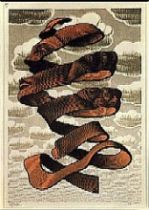 Robert Fenwick III didn't believe in God. It wasn't that he was a humanist or agnostic or, heaven forbid, a commie; he simply could not be persuaded to subscribe to or endorse any ideology. He was not a joiner or a follower; the very idea terrfied him. The universe didn't need a God, as far as he was concerned. Why gild the lilly? he was fond of saying in the local bars after a few. Most of the other patrons were Roman Catholic or Baptist; it was that kind of neighborhood. But despite their influence, here he was, a passionless, introverted, private man who, without any bitterness or anger, couldn't bring himself to accept that an entity of such enormous supernatural abilities could possibly exist. If he exists somewhere, in some dimension, in some reality, he would rant, where is he? How can he idly stand by and allow the horrible things that people do to one another go on? Why bother to create a universe and everything that inhabits it, and then just walk away and leave it all to evolution and chance and free will?
Robert Fenwick III didn't believe in God. It wasn't that he was a humanist or agnostic or, heaven forbid, a commie; he simply could not be persuaded to subscribe to or endorse any ideology. He was not a joiner or a follower; the very idea terrfied him. The universe didn't need a God, as far as he was concerned. Why gild the lilly? he was fond of saying in the local bars after a few. Most of the other patrons were Roman Catholic or Baptist; it was that kind of neighborhood. But despite their influence, here he was, a passionless, introverted, private man who, without any bitterness or anger, couldn't bring himself to accept that an entity of such enormous supernatural abilities could possibly exist. If he exists somewhere, in some dimension, in some reality, he would rant, where is he? How can he idly stand by and allow the horrible things that people do to one another go on? Why bother to create a universe and everything that inhabits it, and then just walk away and leave it all to evolution and chance and free will?These and other troubling thoughts came and went as he otherwise pursued his life. Then one day, it happened. He was coming home from the grocery store down the street, when a bolt of light and a bright, watery whirlpool appeared in front of him. Before he could say, What the ..., he was whisked across the galaxy, through the black, cold, empty void, then through another, differently-shaped, galaxy, and on and on he went. He traveled -- time meant nothing, it was nothing, he saw that clearly now -- through more galaxies and voids, then suddenly it all stopped, and he was standing in a room, a room covered in gold and fine exotic wood, tapestries, the texture and skill of which thrilled him to the bone, hung beside exquisite paintings of bizzare and alien landscapes and terrains. He stood, absorbing the dry frgrant air, alone and terrified, his right arm still curled around a now absent bag of groceries. The lights dimmed to a soft embrace. A couch appeared and on it sat an old man with a long white beard, still robust and strong looking. He gestured for Robert to sit, immediately a chair appeared beside him, a comfortable, high-backed, cushioned chair, deep blue in color, Robert's favorite. As time went by, or what seemed like time, Robert tried to acclimate himself to the very fact of his strange surroundings. What reality is this? he asked himself. Why am I here and how did I get here? As though he'd spoken aloud, the old man said, "Robert. Robert Fenwick III." The voice was not melodious, but it wasn't hostile or angry either. As well, it revealed no discernable accent. "Why are you here?" the old man asked. Was he being rhetorical, or does he expect me to answer my own question? "Do you mean," pointing to the floor, "do you mean here?" The old man squirmed and tilted his head sideways. Partially closing an eye, he gave Robert a good long stare. At last, he said, "You were brought here the usual way." "And,..., that would be... a series of wormholes or leaps from stargate to stargate or, maybe, some kind of interdimensional transport?" "No, Robert. Your skin was scraped from your body, your muscles and blood canals were devoured by ravenous insects, beetles mostly, and your bones were crushed to dust by ocean waves on the beach. What remained was your essence, that which claims the space where the rest fills in. It was this essence that materialized here. What you visualized as happening in the interim was all in your mind." The old man reached for a glass of water.
***************************** ***************************** Stray ThoughtsI've been through hell and high water. Figuratively for the first, literally for the second. I am old with barely a pot to piss in. And all I have to offer is the one certain lesson that to stand up for who you love and what you care about, no matter what it takes, is all that matters in the end. Truly. You're either here all the way, completely, or you're not here at all. Like being almost pregnant. Trying to keep a rational grip on yourself may not be the best idea. You might find out that the rational filter you got going, insulating you from reality while making sense of it, is, in truth, a hard carapace grown from harshness of one kind or another. It's like, if you were to spend a lot of time in a noisy atmosphere, like a machine shop, for instance, your tentacles of sensibility would get cauterized, blunted, along with your mind, your heart, your physical senses; conditioning your mentality towards toughness, sealing you in with knowledge, both protective and learned. Time to open up, slow down, and feel the moments on a quiet, foggy, sunday morning in the summer, in a small trailer, in the woods -- nowhere to go and all day to get there -- drinking coffee, content, nonchalant, cat curled on lap, feeling forgived, outside the lines, free, unrestrained and unafraid, sitting here, writing this. It comes over me like fog. That nagging sensation that I should be doing something else, some chore or errand or some major act of will and body to increase my lot in life, to further me along the path to success and accomplishment, acquiring wealth, prestige, magnificence. But, I much rather smoke a joint here in the quiet woods, drink another cup, and pet the cat. When something really important, for the well-being of the universe, absolutely needs to happen, and the forces of nature are simply not up to the task, magic steps in. You ever notice that? A man can live on slim-jims, barbecue potato chips and beer, but every so often a guy has to have a bacon cheddar cheese burger with jalepeno peppers and fries to remind him just what life is all about. To be lost in one's life is to be what one is doing, without fear, completely and fully invested in the present, in all its physical, emotional and mental sensibilities. It'll grow you faster than anything. It's the holding back, waiting for life to begin while dwelling on things past, trying to figure out what's holding you back, that's the problem. Like trying to swim with an anchor tied around your ankles. Thinking about what's holding you back is precisely what's holding you back. You ever notice in the jillions of ghost movies: the ghost puts his hands through everything, unable to grasp anything material, and can walk through furniture, walls, everything, yet he doesn't fall through the floor and on down through the Earth? The ghost is completely unaffected by either electric or magnetic fields and so he should drift off in any random direction, uninfluenced by any of the forces of nature, including gravity. But he doesn't. He walks around on the solid [thanks to electromagentism] floor, occasionally stepping through walls, doors, whatever. Does that ever bother you? It bothers me. I want the story line to give me an explanation. Period. I'm really mad about it!
***************************** Crashing Out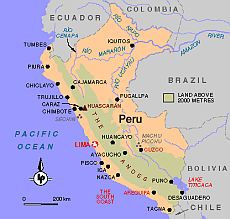 Inspired by the winter spent with reindeer herders in Eastern Siberia, I decided to parachute into the middle of the Amazon with only the clothes on my back, a pocket compass, a Swiss-army knife, a basic map, my passport, a pack of matches and a toothbrush. A person can survive well enough on a diet of large insects, but legs and wings tend to get stuck in the teeth and can be a real discomfort.
Inspired by the winter spent with reindeer herders in Eastern Siberia, I decided to parachute into the middle of the Amazon with only the clothes on my back, a pocket compass, a Swiss-army knife, a basic map, my passport, a pack of matches and a toothbrush. A person can survive well enough on a diet of large insects, but legs and wings tend to get stuck in the teeth and can be a real discomfort.I slept out one night, that was enough. A nightmare of ravenous monkeys gnawing on my arms and legs while I lay helplessly paralyzed woke me around daybreak. I stopped at the next village. The natives took pity on me, offering food and a pack to carry it in as well as a worn but serviceable sleeping bag. They needn't had been so compassionate. Except for the heavier canopy areas, the jungle was virtually impenetrable, so I hadn't strayed far from the relative safety of the trail. When I cut into a piece of fruit, the chief noticed my knife. He invited me into his hut, rather insistently, saying he wanted to show me something; I couldn't very well refuse. He'd found a 45-automatic out in the jungle lying beside a skeleton, its clothes a tattered mess. The dead body's pack, the one I was given, had contained extra clips and ammunition. He proposed a trade: my Swiss-army knife for the whole shebang. He told me he had no use for the gun, never needed one; poisoned-tipped darts were good enough for his father and grandfather and the rest of his tribe, so they were good enough for him. But ever since he was a kid and saw a picture of a Swiss-army knife in a magazine at a humanitarian aid clinic, he dreamed of owning one. As a bonus, he threw in an old machete which he was nice enough to have someone sharpen. They warned me of the inhabitants I might run into: the 600-pound tapir, vampire bats, anaconda, poisonous snakes, and don't forget the jaguar. Scoring the gun proved serendipitous, a sign I must be on the right track. And the leafcutter ants wouldn't be a problem unless I was unlucky enough to sleep on top of one of their warrens. I hoped to avoid that fate.
The following morning I left with good wishes from the early risers. I re-found the trail and headed west, taking my time. Somewhere along, an overwhelming impulse compelled me and I plunged into the forest, hacking my way through. Suddenly, I entered a small clearing covered with decaying leaves and twigs; mushrooms of countless variety grew from dead mossy logs and on the bark of living trees. The dank moist smell was almost overpowering, and a cool updraft chilled my bones. Despite its outward appearance, it felt like a sacred place where souls gathered to rise to heaven. I lay down on a pile of leaves to stare up in utter amazement at the height of the enclosing trees, well over 200 feet tall. In the morning sun I could see vapor from the leaves forming clouds over the canopy. Clouds that would rain down on those very same leaves to begin the cycle anew. The canopy cover darkened the enclosure, but not so much as to deny me this grand spectacle of life and death in the Amazon. Abruptly fearful that my soul might join the others, I rose to continue my journey, keeping an eye open for the inhabitants. Occasionaly, I'd hear brush moving off to a side and pull out my 45. But mostly my mind was set on the plant life and the incredible number of different trees. I remembered reading that in 2.5 acres, you can find over 700 different species of trees and twice that number of plants. Plants, some of which looked like pineapples, displayed all shades of blue, red, orange and purple. Colors danced everywhere, blending texture with the rich glossy green backdrop. A flower with a leaf resembling a lobster claw, of every color combination allowable on each separate leaf, stood out from the crowd. And the smells -- orchids, mimosa, rich dark earth mixed with the musk of tropical greenery, and animals. Yes, I couldn't forget the residents, the kind that have a taste for meat. Monster trees supporting whole ecologies on each differentiated level, like parallel universes; birds of every conceivable color-pattern, plumages and neck ruffs ready for display, interested, assertive, busy with life; and insects, large, serious, voracious.
Three snow-peaked ranges spread out like massive white-capped waves of granite and limestone rolling in from the sea. And beyond that, we had the bleak rocky Peruvian desert to look forward to, mountainous dunes and wide lonely expanses of barren sand. We decided to take the warmer northern route; besides lower, it's also closer to the equator. I've never been into mountain climbing for its own sake, to prove something. Never saw the point. The basin of lush green grasslands on the eastern slope provided relatively easy going, but it didn't last long. Eventually we got into the dense tropical forest of the Amazonian Plain. Hundreds of rivers and streams weave through the jungle along which native villages prosper. As well, fish-rich lakes dot the landscape. Transport is by boat or canoe, streams and rivers of varying speeds and other dimensions branch into networks of pathways through the forest. The mountain passes would be another experience altogether. We stopped at the next town for breakfast; they were buying; I didn't protest. Questioning our next step, we checked the map again. Tired of walking, at least for now, we bartered with a local who was taking fruit to Pucallpa on the Ucayali River in the highlands, and took our chances. He had a short flatbed; they sat up front while I squeezed myself and gear between baskets of potatoes, squashes and avocados.
Entree du Village de Voisins (1872) Camille Pissarro
***************************** I remember when I had faith. Faith that if I was fully physically, emotionally, and mentally here, committed completely to the present, then the future would take care of itself. I was to learn that such a degree of concentration is not enough, even if it were sustainable. Sometimes we need to let go and let the present come to us, for better or worse. Loss, pain, suffering can't be avoided by sheer act of will.I was recently talking with a friend of mine, a woman I've known for twenty years, back when I was still a fisherman, with whom I've had wonderful and often intense conversations. We started talking about the contradiction of freedom and self-discipline, how you can't have one without the other. We had to clarify discipline. Real discipline and the dysfunctional kind. Putting what I call lines around yourself, through yourself, lines of behaviour, actions we allow ourselves, for to do otherwise, our whole cardhouse would disintegrate and we would not achieve what we want. That is not discipline; it's a self-imposed prison. And I've learned, and she agreed, that the line method is completely wrong, it doesn't work, it's just the opposite of what needs to be done. We can't be at our best, or do what needs to be done, especially in novel situations where we have to be resourceful, or even feel how we really feel, and to what depth, if we have lines constraining and restraining. It doesn't mean we forget about the future; that's where the discipline part comes in. Whenever we see a line forming, we zap it, neutralize it, dissipate its calling power, because the line method -- self-oppression -- is the opposite and wrong way to go. Without that real discipline, there can be no personal freedom. And without empathy balanced by necessity, the ground for discipline is empty and meaningless. Sounds like a contradiction, but it isn't.
***************************** Science ReportAn article to appear in the upcoming October issue of International Physics Quarterly concerns a remarkable and earth-shattering discovery, likely to necessitate the rewriting of modern physics [and philosophy] textbooks, by a team of researchers from the Leibnitz Nuclear Laboratory at Fenwick, Austria. The reader might be aware that, thanks to critical experiments at the Large Hadron Collider, Cern, the Higgs boson, hypothesized to be responsible for matter's mass, was discovered and its properties proven to be true -- without it, matter would have no mass and therefore, gravity would not be. Now, similarly, a force particle, currently named the Fenwick boson, has been found to be responsible for the phenomenon of duration in the time field. Without it, scientists agree, everything would happen at once, radioactive decay would occur instantaneously, the universe would not exist, and there would be no waiting in line. The very idea of waiting would cease to make sense. Light would be all that existed, traveling as it does in a zero time-frame differential. The nature of existence itself will now have to be drawn into question. How could anything, including people, be said to exist without the backdrop of temporal duration against which the forces of nature work their magic? What, in effect, is reality? Is it all just a dream? The members of the team refused interviews with both the BBC and the New York Times, among other worldwide media outlets, stating that they just didn't have the time. It remains to be seen what consequences subsequent experiments will bear. At any rate, it represents a truly monumental discovery worthy of a Nobel Prize [this reporter's opinion].
*****************************
The Astronomer (1668) Johannes Vermeer
***************************** I recently logged-on to ANCESTRY.COM and discovered that my 14th century ancestor worked as a dishwasher in a roadhouse in northern England, was a consummate drunk, and had a son by a prostitute who died in the Black Plague.Who knew? Based on a tip from my uncle in Louisiana, I again went to ANCESTRY.COM and discovered that a great, great, great granduncle on my mother's side once stood on a corner in Princeton within three miles of the cafe where Albert Einstein's housekeeper occasionally went to have coffee. And going back 10,000 years, I found that a relative of mine invented society, the rule of might makes right, and the custom of wearing clothes in public. Beyond that, I learned that an ancient ancestor [back when they first started keeping records on walls] shared the same cave as the woman (naturally) who invented fire, the idea for the round wheel and the hunting technique of chasing animals over a cliff. She's considered, in the scientific community, as the Leonardo da Vinci of the Stone Age. Continuing to search, encouraged by my findings, I discovered that a distant relative had cleaned various torture equipment for the Church during the Spanish Inquisition. It was only part time, but, what the hell, he was part of it all, an historical fact, and that's what counts. Pretty great, huh? Amazing. What a family! Inspired by those revelations, I did further digging and discovered that my great, great, great grandfather was from the planet Xulcar, could morph into any form he chose -- of the same mass -- had multiple appendages in his normal state, and could reduce any living thing to a dead thing with a single thought. Wow! Who knew that? Why didn't anyone tell me?
***************************** The Observer The concept of fact is perfectly valid in quantum mechanics. If one adopts Bohr's definition of a conceivable fact, then all phenomena can be considered as classical properties resulting from decoherence.
The concept of fact is perfectly valid in quantum mechanics. If one adopts Bohr's definition of a conceivable fact, then all phenomena can be considered as classical properties resulting from decoherence. Entanglement -- superposition -- decoherence -- complementarity -- Pauli's exclusion principle -- quantum measurement -- nonseparability -- tunnelling -- nonlocality, together represent the infrastructure and morphology of the quantum universe. A domain of propositions suitable for describing a quantum system involves a family of histories verifying additivity conditions -- a consistent family -- so that probabilities may be assigned histories -- paths. The additivity condition for probabilities significantly restricts the class of all conceivable histories. Probabilities are simply numbers assigned to events -- properties or histories. Those events form a complete family; they are mutually exclusive (think sets) and cover all possibilities (are topologically compact). A given quantum system may be described by many different families of histories. And the existence of different logical frameworks in which to speak of the same object is nothing new. However, depending on our choice of propositions, we would have two different domains of propositions (or of histories), and two different logics that cannot be embedded into some other larger and consistent super-logic. For, if there existed two mutually exclusive sub-logics the union of which formed a larger logical environment, they would necessarily have some [logical] properties in common by virtue of heredity, by virtue of factoring. But in that case, we'd have a contradiction, therefore, there can be no larger logical frame containing two different families of histories; that is, no larger logical frame that forms the context for a state of a system that verifies the additivity condition for both logics acting independently. The Operator sets the atmosphere for the requisite family, and no two can intermingle. Vectors in quantum mechanics represent physical states of affairs. Certain physical states of affairs are superpositions of certain other states. A superposition of a family of mutually exclusive sub-logics represents a separate and unique physical state for a system. Another family -- another distinct set of basis elements -- would constitute another separate and unique state of affairs. The sub-logic sets are mutually exclusive in the sense of a different set of coordinates -- a different vector space -- occupying the same toplogical space; they can be thought of as two separate and non-equivalent dimensions without intersection. ***************************** Quantum Mechanics For Dummies -- 3rd edition Once upon a time the universe was a tiny glass ball suspended in a void of jello. It was so tiny that you wouldn't even be able to see it. This conclusion is the result of reverse logic. You see, Edwin Hubble observed, in 1929, that the universe has been and still is expanding in all directions, spherically, if you will. Because of this, we construe that at one time in the distant past it must have been very tiny. Now, what would cause something to expand? An explosion might. But what kind of explosion? Not your ordinary kind like dynamite or firecrackers or nuclear bombs. No. We just say explosion to kind of get the idea, but, in truth, it might have been something like a rebounding or repelling from a central point. We really don't know. And what that point could be in actual physical terms, we also aren't sure. You see, a lot of what physicists and cosmologists talk about is based on guesses, but that doesn't stop them from formulating theories about the origin of the universe. It's fun.
Once upon a time the universe was a tiny glass ball suspended in a void of jello. It was so tiny that you wouldn't even be able to see it. This conclusion is the result of reverse logic. You see, Edwin Hubble observed, in 1929, that the universe has been and still is expanding in all directions, spherically, if you will. Because of this, we construe that at one time in the distant past it must have been very tiny. Now, what would cause something to expand? An explosion might. But what kind of explosion? Not your ordinary kind like dynamite or firecrackers or nuclear bombs. No. We just say explosion to kind of get the idea, but, in truth, it might have been something like a rebounding or repelling from a central point. We really don't know. And what that point could be in actual physical terms, we also aren't sure. You see, a lot of what physicists and cosmologists talk about is based on guesses, but that doesn't stop them from formulating theories about the origin of the universe. It's fun.Now, where were we? Oh, yes. The tiny glass ball exploded into zillions of irregularly-shaped shards of 3-dimensional pieces of disorganized, circular wedges of molten nonhomogeneous glass. These shards add up to our single original ball -- our wave function or state vector -- the whole being greater than the sum of the parts. Each shard can be considered an eigenstate, and the entire ensemble of these, in turn, represent a basis, each element of which is called a pure state. We can think of a basis as the fundamental building blocks, the bare bones architecture without the moldings or paint. The sum of these shards corresponds to the idea of superposition. An intriguing idea which conveys the dual notions of emergent nonlinear oneness or singularity and the many separate parts of a system interdependently co-varying with time. It's the quintessential concept -- the Janus face of the One and the Many, immersion and transcendence. But we stray. How did our original glass ball come into being and what caused it to explode? The how may remain forever unknowable. But the what may have an answer. It's difficult to consider without venturing outside the limits of science into the realm of religion, or what passes for modern religion. Currently a debate wages among the members of the internatiional scientific community over the proper understanding of time. A revolution is in progress. Not only over time, the definition and nature of space is also undergoing revision, a thorough reorientation in perception and understanding is taking place. Why is this happening? Einstein joined the two notions into the one of spacetime. Now, however, their cooperation with regard to synergisitcally manifesting phenomena is simply insufficient to explain the theoretical implications of various directions in science [string theory and CDT in physics and new understandings in biology] when considered as a whole. Some scientists, in fact, don't believe that time actually exists as such, as we've always understood it -- duration underpinning change; transformation from one physical composition [quantum state] to another necessarily needing to take time.
Space becomes quantumized, each still, although infinitesimally close, a discontinuous jump. One frame, then the next, with nothing happening in bewteen, similar to the energy levels of an orbiting electron -- no energy discernable between them. But between now and later, change occurs, and we think of the change as a result of physical laws evolving mathematically over time. Between is duration -- time passing. Thinking about it in different terms -- in a spatial context -- doesn't negate the feeling, the intuition of time passing. The transformation is the same regardless of what terms are used to describe it. Cause and effect can be localized and discretely separated, yet somehow connected under physical laws, but not continuously. And as laws are said to evolve over time, evolution must also behave discretely, with leaps a common occurrence, or rather, the norm. The next event, or outcome of a measurement, in a series is only probabilistic, the classical cause-effect link broken. Quantum mechanics tells us this is so. How then does the next event know what to do or be? Are those choices embodied in the wavefunction of the previous event? Are they constrained by the past? Is it true that in reality we do not exist between the beats of our heart?
Well, that's enough for today. Our next lesson will have to do with what's called entanglement. It's a truly magical quality of all matter in the universe, a genuinely mysterious phenomenon. It belies the limiting velocity of signal travel as being that of light. Some other form of communication is going on, perhaps through other dimensions of space and time, neither of which is as deeply understood or developed as they need to be in order to explain anything. But does that stop scientists from trying? Noooooo. Fun, huh?
***************************** "Mathematics, rightly viewed, possesses not only truth, but supreme beauty -- a beauty cold and austere, like that of sculpture."
***************************** The Unified Humpty Dumpty Theory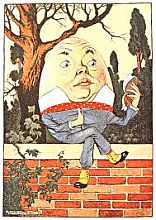 Humpty Dumpty sat on a wall, Humpty Dumpty had a great fall, etcetera. Let's imagine Mister Dumpty to personify the beginning cosmos and 'falling off the wall' as the Big Bang. He shattered into a gazillion pieces only a handful of which may be considered as fundamentally important; that is, the others can be produced by mixtures of these basics. That's in the abstract, of course. For purposes of reconstruction, every piece counts as equally significant and necessary.
Humpty Dumpty sat on a wall, Humpty Dumpty had a great fall, etcetera. Let's imagine Mister Dumpty to personify the beginning cosmos and 'falling off the wall' as the Big Bang. He shattered into a gazillion pieces only a handful of which may be considered as fundamentally important; that is, the others can be produced by mixtures of these basics. That's in the abstract, of course. For purposes of reconstruction, every piece counts as equally significant and necessary.Now, here's what happened almost immediately after the big crash on the king's lawn. The pieces, jagged and misshapen as they were, evolved and transmogrified many times over, individually varying as to when these phase transitions occurred and the number of times. Maybe they were stepped on by the men and their horses, I don't know. Thusly, all the king's horses and all the king's men -- the scientists -- in order to reconstruct Mister Dumpty as he was at the moment of creation, would have to reverse this process of transformation for the jigsaw of shells, to trace the process back in time. That is, to return them to their original shapes and sizes and, not only that, to place each in its proper juxtaposition with others within respective neighborhoods, dovetailing the boundaries of these neighborhoods seamlessly in order to reconstitute good old Humpty Dumpty -- the genesis egg. All the king's horses and all the king's men couldn't put Humpty Dumpty back together again. What did time and space look like before there was time and space? What did Humpty Dumpty look like before he was a shattered mess on the king's lawn? Do any pictures of him to guide in reassembly exist? We harbor a pre-conceived notion of what an egg's supposed to look like -- an ellipsoid. And so we try to force all the separate pieces to conform. Are we too constrained by reason? Are there other possibilities, other egg shapes outside the class of all possible ellipsoids? Was Humpty Dumpty, in fact, an egg in truth as we understand it?
On an episode of Law & Order a man was killed by a whiskey bottle broken over his head. It shattered into dozens of pieces of varying sizes and configurations. Recovering fingerprints was an obvious problem, the pieces contained partials and so needed to be joined appropriately. However, the forensic person was something of a genius. She made a mold of the specific whiskey bottle -- filled an empty with wax, let it harden, set it free -- and then painstakingly -- she confessed to being a jigsaw puzzle enthusiast -- glued the many pieces onto the mold, reconstituting the original murder weapon from which she obtained complete fingerprints. In the wonderful world of physics, do the partial fingerprints give us a clue as to how the pieces fit together? Maxwell saw them. Newton and Einstein did too. As well, Richard Feynmann and Steven Weinberg. Physicists work in the dark, guessing at the shape of the whiskey bottle, the original mold. And doing so with pieces that have transmogrified considerably.
Now, imagine a three-dimensional 1,000-piece jigsaw puzzle of the Taj Mahal. Through some mechanical process -- melting, cutting, stretching -- separate pieces are transformed so that the puzzle's reassembly resembles the White House. Without having the picture on the box-top to go by, how do we change each piece back to one that, when fitted together with the others in their proper arrangement, models the Taj Mahal? What reverse engineering must be done in order to compensate -- in proper sequence, of course -- for the phase transitions, evolutionary leaps, redirections caused by coupled nonlinearity, positive and negative feedback, and temporarily manifesting contingencies, the historical facts and physical evidence of which having been completey obliterated and thereby rendered unknowable? How do we get back to a model that can be embodied in a single mathematical template? How do we reconstruct the Taj Mahal? In superstring theory physicists search for the proper Calabi Yau shape of the curled-up dimensions, out of thousands of classes from which to to choose. The Taj Mahal architecture of the initial state of the universe remains unknown. We presume a state of very high energy, when all the forces melded into a single master key. However, without a box-top to go by, such an assumption may be misleading. As a matter of fact, all our assumptions may be off the mark, based, as they are, on the guiding belief that a heartbeat before the creation of the universe, all was One. Is this belief mistaken? The solution most assuredly lies with geometry, with the peculiar and unique shapes of the original pieces of the puzzle. We need to envision a universe prior to space and time, before matter and energy, underlying both the Taj Mahal and the White House. A universe of both continuity and discontinuity, of order and disorder, blending together as a single complex of nonlinear -- hence interdependent -- interactions. A universe of pure mathematics. ***************************** in pursuit of fallen dreams through mired memories and shifting shadowlands wandering aimless midst the desolation
silhouettes and specters surface
***************************** Prajna On The Half Shell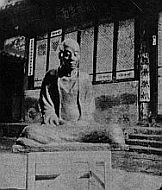 The problem with imagining oneself to be enlightened is that it necessarily brings with it a predisposed, self-conscious attitude of superiority that finds itself threatened by the inevitability of encountering evidence to the contrary and forced to recognize it. These threats strike at the heart of the wannabe Buddha; they are as fallen trees in the path. Being able to see other peoples' minds against the backdrop of the larger identity -- tiny oases of rational thoughts (or irrational) circumscribed in a bubble of separateness, self-enclosed personal universes -- is only half that consciousness, the passive half. The other has to do with actualization. In the moral arena, assertively going forth to act in defiance of a wrong perceived with the intention of stopping it. But, to act suchly a wannabe must overcome the belief that even though the wrong is clearly such in every possible way, it is still an expression of God's (Atman's) will and therefore must be treated with respect, believing that somehow there is reason to it, a reason mysterious and unknowable.
The problem with imagining oneself to be enlightened is that it necessarily brings with it a predisposed, self-conscious attitude of superiority that finds itself threatened by the inevitability of encountering evidence to the contrary and forced to recognize it. These threats strike at the heart of the wannabe Buddha; they are as fallen trees in the path. Being able to see other peoples' minds against the backdrop of the larger identity -- tiny oases of rational thoughts (or irrational) circumscribed in a bubble of separateness, self-enclosed personal universes -- is only half that consciousness, the passive half. The other has to do with actualization. In the moral arena, assertively going forth to act in defiance of a wrong perceived with the intention of stopping it. But, to act suchly a wannabe must overcome the belief that even though the wrong is clearly such in every possible way, it is still an expression of God's (Atman's) will and therefore must be treated with respect, believing that somehow there is reason to it, a reason mysterious and unknowable.Moreover, to act in support of what is clearly right means temporarily, at least, suspending the imagined protection granted by ego-suppression and denial. But only the ego can act. And through the wannabe it acts against evil with all the might and fearlessness of knowing truth, while yet identifying with the larger picture. However, your average wannabe Buddha is unwilling to go out on that limb, that sense of superiority cannot be jeopardized. His passivity, masking fear, is his downfall. He doesn't realize that sometimes the reins need to be handed over to the ego. High self-awareness always includes an unresolvable blind spot of which the enlightened is unaware. From Zen: "The eye that cannot see itself." [A parallel to this can be found in Kurt Godel's incompleteness theorem.] This eye is the self, the X-factor. It asserts through the medium of the ego and acts independently, without a net, not holding onto a network of ideas and attitudes. It's completely on its own, being what it was always meant to be. True enlightenment is a paradox insofar as it negates the above mentioned predisposed attitude. Therefore, the truly enlightened individual would not be aware that he was. Curiously, the smugly ignorant individual also isn't aware that he is; ignorant, that is. However, despite these opposing views, the individual who believes himself to be enlightened and the ignoramus share the conviction that their worldviews are congruently correct. Moreover, their mutually disjoint perceptual realities mirror a world in which they are somehow able to function, not only validating these separate mental reflections but also justifying and rationalizing them as accurate representations of the way of things. However, a major difference lies within the souls of each. When the ignoramus meets someone who challenges his ignorance or is in direct violation of it, he fights to the end, killing the non-believer if necessary, with no remorse. Oh, if only the wannabe Buddha had such unshrinking blind faith in himself, such passion and righteousness. The world would be still be just as phony, but at least it'd be a kinder, gentler phoniness. The ignoramus portrays characters conjured in his psyche, clothed in his mind, and acted out in his body. Those with sociopathic tendencies -- narcissistic, incapable of empathy -- can portray whatever character they deem necessary, as the mood strikes them, but always with the purpose of gaining and applying control. If it takes undermining your happiness, your raison d'etre, then so be it. You can't be friends with a sociopath, the attempt can lead only to disaster. As the portrayal of the Bhodisatva animates the core of his belief, the wannabe Buddha also adamantly refuses to abandon his purpose, which is to bring the ignoramus to enlightenment. The ignoramus sees this as a sign of weakness and acts accordingly, contempt being his main tool, an attempt to humiliate and lower the wannabe's sense of worth, thereby making it that much more difficult for him to stand up for himself, and easier to control and abuse. And so the wheel turns. However, history has shown that, sooner or later, the ignorami go too far and have to be put in their respective places. And nothing is more ruthless and final as a one-time wannabe Buddha who's fed up and pissed off. Fearlessness, he's worked on; a sense of superiority with regard to knowing the difference between right and wrong -- I believe they call it a moral code -- also can be found among his tools. One day the tide will turn. It's only a matter of time.
*****************************
***************************** Every so often a window of optimism opens. Something triggers it. An autmun sunset; a whiff of wood smoke mingled with damp moldy leaves; a sound, hollow and sudden, like a bamboo mobile caught in a gentle rush. For the moving moment, joy cuts free the sorrows and losses of the past, hope and desire and a sense of future beckons and teases us to come out to play. A bubble of time embraces us, a time dilation of the heart and soul where exhilaration and lightness fill the air, and with a pang of nostalgia we remember when life was all about that and nothing more.***************************** The Granulated Man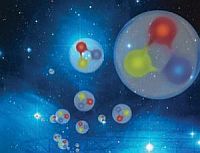 The granulated man drove his car down the long country road at dusk on a chilly autumn day. For three days wind had been blowing, gusty and turbulent, confused and irritated; the black-top was a sea of scattered twigs and fat maple leaves, stuck spread-eagle. The intermittent freight-train sound through the tall trees bracing the snakey road kept his mind somewhat focused. He'd done this a million times, but each time demanded concentration on the job at hand, not on an emergency level, but just enough. It was almost annoying. Nonetheless, in spite of this minor duty, he let his mind drift as his body drove the car, knowing full well how to do that.
The granulated man drove his car down the long country road at dusk on a chilly autumn day. For three days wind had been blowing, gusty and turbulent, confused and irritated; the black-top was a sea of scattered twigs and fat maple leaves, stuck spread-eagle. The intermittent freight-train sound through the tall trees bracing the snakey road kept his mind somewhat focused. He'd done this a million times, but each time demanded concentration on the job at hand, not on an emergency level, but just enough. It was almost annoying. Nonetheless, in spite of this minor duty, he let his mind drift as his body drove the car, knowing full well how to do that.A flash of sunlight glinted off the hood directly into his eyes. Instantly, the granulated man disintegrated corporeally through a time-sieve, granule by granule, at the speed of thought. He found himself driving a Chevy Impala on a road 3,000 miles away. It was daylight, the sky, a light grey; no wind. No wind, no twigs, no leaves; all was still. He was 27 years younger and stronger, confident, knowing full well who he was. He was traveling from Homer to Kenai, on his way back to his boat. Beside him on the seat was a glass jug of margaritas and a couple of joints. Every particle of the granulated man dissolved and immersed itself into that grainy consciousness. Every particle of his soul's identity became one with his body. Every particle of his being let go its hold, and de-crystalized. Just then, a truck came round the curve and slid on the leaves into his lane. He pulled the wheel of the old station wagon hard to the right and skated the sandy shoulder. The truck whizzed past; he quickly regained the tarmac. The old Ford Country Sedan, with its creaks and groans, wrapped him in its familiarity. Its many idiosyncrasies were strangely comforting, in a seedy rustic kind of way, its weight and lowness to gravity slicing through the wind like a hot knife through butter. Coming around the long 90-degree curve, he faced the setting sun, its light reflecting off the snow-covered hills to the northwest. The sun glared the wet blacktop; even with sunglasses and the visor down, it was difficult to see. Suddenly, the twig- and leaf-covered road shimmered, rapidly flickering between bright and dark several times, the distant horizon settling on a yellow-green smudge, like a fingerpaint. The power of the Chevy 327-V8 hummed under his hands. Adjusting the rearview mirror, he sped up, the gritty roar of the engine all the music he needed. Leaning back in the plush leather seat, he took a swig from the margarita jug, then fired up a joint.
***************************** Being/Becoming The door of our Time-Ship slides open and we venture forth, into the year 2150. The Unified Theory of Everything is part of science history, its completion several decades old. The theory was described from a revolutionary point of view with respect to the old dogma of one universe, one equation. That outdated approach was scrapped in the mid-21st century due, in great part, to the overwhelming proliferation of hypothetical unverses and scenarios for their origins, none of which was objectively provable. It was chaos and madness. Now [2150], the revised model of the universe depicts a superposition of invariant ideas and concepts, interconnected each to all, and by those means and with those terms, explainable, unambiguous, complete, sensible.
The door of our Time-Ship slides open and we venture forth, into the year 2150. The Unified Theory of Everything is part of science history, its completion several decades old. The theory was described from a revolutionary point of view with respect to the old dogma of one universe, one equation. That outdated approach was scrapped in the mid-21st century due, in great part, to the overwhelming proliferation of hypothetical unverses and scenarios for their origins, none of which was objectively provable. It was chaos and madness. Now [2150], the revised model of the universe depicts a superposition of invariant ideas and concepts, interconnected each to all, and by those means and with those terms, explainable, unambiguous, complete, sensible. The infinite cosmos, regardless of which hypothetical view one takes -- how many dimensions, the existence of parallels, bubbles, whatever -- was divided into invariants, constants of self-sustaining systems in the body universe. Questions had to be answered with unequivocal certainty and clarity, based on the general frame of understood reference. What is Time? What is Space? What are forces, really? What role does symmetry ultimately play in all this? It's been known since the 20th century, thanks to Emmy Noether, that symmetry points to laws of conservation; as the universe evolves, certain genes are deeply conserved. We apply the label symmetric to anything which stays invariant under some suitable transformation group. Felix Klein, with his Erlangen Program, associated different geometries with certain quantities and formal relationships (like distance, angles and parallel lines in Euclidean Geometry) left invariant under particular finite, continuous, symmetric groups of transformations (non-singular linear maps); these respective invariants in turn define the geometries. Noether associated different symmetries under specific finite groups of transformations with different laws of conservation. Therefore, different geometries are linked to various laws of conservation. The Law of Conservation of Energy, for instance, states the principle that the amount of energy in a closed system is constant, irrespective of changes of form, under time translations, a subgroup of coordinate transformations. These laws are the invariants in/of the system. And each eigensystem of the superposition is synaptically connected with every other by a sublime, self-organizing and self-interacting symmetry. The ideas and concepts that make up our mental picture of the physical world interrelate in perfect harmony -- up to a point. Without an asymmetric proclivity built in, Life in the universe would not be. Symmetry is broken and immediately repaired in less than Planck time; hence the turbulence and nature of quantum reality. Symmetry/asymmetry, order/disorder, continuity/discontinuity, complementarities are the essence of the cosmic genome. And the initial intrinsic motion that kicked the whole thing into gear can only be the cosmic-scaled, pantheistic will to be. Perhaps the fundamental complementarity: Being/Becoming.
‘‘It is increasingly clear that the symmetry group of nature is the deepest thing that we understand about nature today’’
Given: A set of continuous partial differential equations describing the workings of a physical field. After a clever change, a variable drops out of the equations, pointing to an underlying continuous symmetry. This was Sophus Lie's fundamental insight. What underlies this symmetry is called a Lie Group, which in turn generates a Lie Algebra -- a local vector space over some field with Real or Complex coordinates. A Lie Group is at once algebraic and geometric, a set of algebraic points isomorphically mapped to and embedded in Euclidean space. Emmy Noether associated the dropping-out variable to a conserved quantity or functional. The underlying Lie Group corresponds to a law of conservation under some invariant subgroup of coordinate transformations. This invariant subgroup is the kernel, or identity, of the parent group under a homomorphism, a map for which the operation of the parent group is preserved, that is, the structural relationships are equivalent and invariant. In the physical realm, the points are the idealized solutions to the partial differential equations describing some force field, a volume of spacetime where some action takes place. When these variables are just so, we have conservation of some quantity or functional. In that solution space, the field equations act collectively like a cookie cut-out in spacetime. For example, with regard to the Energy Conservation Law: Under the influence of the respective Lie Group, time drops out of the Lagrangian energy equation, thereby losing its status as a variable to adopt the role in the equations of a constant. The gauge of time-duration varies in each frame relatively, but it means nothing as the symmetric equations are time independent. The basis acts as the set of generators of this subgroup of time translations and also generates the vector field representation of the differentiable manifold. Accordingly, the form of solutions of the PDEs [physical laws] in a vector field are dependent on the basis set for their expression, but the relationsips among the basis components remain invariant under change, symmetry is preserved. The principle of least action forces natural systems to be channeled along the most efficient vector. Describing a path trajectory by a series of generalized coordinates and by choosing a path that's minimal and by taking infinitesimal steps, the influence of constraining forces acting on a field is thereby essentially eliminated, revealing the symmetry of the field equations set in relief, and on a deeper level, the basis set of generators of the associated Lie Group. It's as though the vector field has been rotated and reoriented to its canonical [natural] kaleidoscopic configuration. The physical axes dictating the global shape of the material field line-up with the eigenvectors [basis] of the equations of motion for each point/particle, the forms are the same.
To reiterate:
* Noether's Theorem
***************************** Click image to the right for larger version ... →
"The Kepler team is hosting its inaugural science conference at Ames Dec. 5-9, announcing 1,094 new planet candidate discoveries. Since the last catalog was released in February, the number of planet candidates identified by Kepler has increased by 89 percent and now totals 2,326. Of these, 207 are approximately Earth-size, 680 are super Earth-size, 1,181 are Neptune-size, 203 are Jupiter-size and 55 are larger than Jupiter."
***************************** December 14, 2011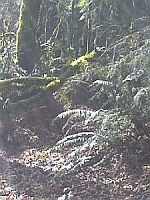 My place in the woods is quiet, peaceful, serene, slow. The ground is covered with wet maple leaves and, except for the evergreens, the trees are bare. Distances shrink because of this, you can see far into what is otherwise dense forest. After a month of overcast skies, for a few days last week the sun shone, albeit weakly and mirthess and only for a few hours, setting behind the mountains around three o'clock. All was still, no wind, not even an occasional breeze. Tiny birds flitted about, somehow finding food. The robins turn leaves over and eat the fungus on the underside. I walked about, coffee cup in hand, stopping every so often, adjusting to each new perspective, when it hit me.
My place in the woods is quiet, peaceful, serene, slow. The ground is covered with wet maple leaves and, except for the evergreens, the trees are bare. Distances shrink because of this, you can see far into what is otherwise dense forest. After a month of overcast skies, for a few days last week the sun shone, albeit weakly and mirthess and only for a few hours, setting behind the mountains around three o'clock. All was still, no wind, not even an occasional breeze. Tiny birds flitted about, somehow finding food. The robins turn leaves over and eat the fungus on the underside. I walked about, coffee cup in hand, stopping every so often, adjusting to each new perspective, when it hit me.I'm old and I've lost almost everyone I cared for and loved, everyone who'd given my life meaning. I don't expect to launch into any new adventures or score that great job and eventually buy a house. I don't expect to meet someone and fall in love. I'm at the short end of the stick. Perversely, however, I find my situation strangely liberating. I have nothing to lose. Accordingly, I decided, while on my walk that particular day, to allow myself to drift off into a controlled craziness. I don't mean acting recklessly or becoming overly aggressive. I don't intend to deliberately break the law, although if it comes to that I'll pay it no mind. None of that stuff. What I mean is just the opposite, in fact. I'm going to give up any sense of urgency and worry about practical things. I'm going to do things impulsively, do things differently than I ordinarily would, than my ingrained habitual self would choose to do. In other words -- I'm dropping out, again. Only this time, it's happening at the end of the road. I see a wide delta before me. An expanse of many curving paths all leading to nothing, emptiness. It matters not which I choose, they all end up at the same place. I screwed up many important times in my life, either doing what I believed was right for me, or allowing what I see now to be wholly irrelevant to suppress my true self's heartfelt desires -- my life. I held myself back, in other words. I could get angry about it, angry at myself mainly. But what would be the point? I'm not certain what prompted this... decision. Perhaps it was the news I heard last week. I was down the harbor in my car drinking a cup one early morning, gazing at the smooth surface of the bay, reminiscing about my days at sea, when a car slid next to me. I hadn't seen the driver for over ten years, even though he'd been in the area. Some time ago, I stopped socializing; I feel better for it. Anyway, in the midst of the chit-chat he told me one thing that mattered. As an aside, I believe accidental meetings occur for a reason; we have to keep our ears open, waiting for it. You may not remember anything you talked about except for one single piece of information, which is the purpose of the random encounter. Paths cross. He told me that a good friend of 35 years, who I'd lost touch with in the past six months, had committed suicide last summer. It stunned me. I no longer wanted to talk to this guy and, in fact, we stopped shortly afterwards and said our goodbyes. He drove off. I continued to stare at the calm water while memories of my friend bubbled up from the hodegepodge of yesteryear. He had an infectious laugh which always loosened me up when I was in an overly serious mood. And he had wit, incisive and humorous at the same time. He could also be ornery and cynical, but deservedly so.
Whatever the case, I'm dropping out by dropping in, into my skin. The future glares in tones undefined, shimmering and blank, no road signs or destinations call my attention. Most of the people I befriended in my life are gone, I can't even recall all their names. In my youth, dropping out meant taking an entirely different path; abandoning career, beliefs and fear of standing out. Now, it entails doing the unfamiliar, paying attention to the present, following whims, for their own sakes and in memory of those I've cared about. To act with self-respect, not with arrogance. Sincerity and simplicity will do. And to be kind as a rule to all creatures, unless they mean to harm, then to respond in kind. Trying to maintain a grainy, earthy sensibility, no intervening net filtering traffic for purposes of expediency, is how I've tried to live most of my life, not always successfully by any means. When I was a boy playing in our tiny backyard, I used to enjoy the feeling of the dirt on my skin as I placed my army men or cars about in imaginary circumstance. I like the feeling of the earth, the air and the sea. Dropping in, into the skin of the Earth.
***************************** Uncharted Territory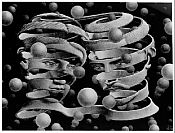 In Quantum Mechanics, entanglement occurs when particles interact physically. And regardless of the distance separating them afterwards, some kind of communication transpires correlating results of experiments. They stay in touch. The key thought is that this communication happens faster than light. The concepts of entanglement and nonlocality are often confused as being equivalent. Entanglement is necessary for nonlocality, but the reverse is not true. That is, nonlocality can be said to include entanglement as a function, in other words, and is the nature of the ambient space allowing for entanglement.
In Quantum Mechanics, entanglement occurs when particles interact physically. And regardless of the distance separating them afterwards, some kind of communication transpires correlating results of experiments. They stay in touch. The key thought is that this communication happens faster than light. The concepts of entanglement and nonlocality are often confused as being equivalent. Entanglement is necessary for nonlocality, but the reverse is not true. That is, nonlocality can be said to include entanglement as a function, in other words, and is the nature of the ambient space allowing for entanglement.Nonetheless, for two distant particle systems to somehow demonstrate a correlation beyond all probability assessments is a deep mystery as yet incompatible with current thinking about the nature of reality. It's accepted in quantum mechanics much the same as a Houdini magically appearing outside a closed box in which he was imprisoned. It's experimentally provable, so it exists as a fact of nature, but how it works defies the rules of special realtivity and common sense. Instantaneous communication across the universe, while light photons dawdle behind. What could be going on here? The current understandings of the concepts of time and space are undergoing revision. Much deep philosophical thought is going into this project. Absolute time and space, the Newtonian worldview, were uprooted and replaced by the merging of time and space into a single geometric dynamic duo. Now, I believe it's understood, time and space are seen as not fundamental, that somehow they are created and have emerged from the workings of an undelying space. In Algebraic Topology, the sophisticated idea of a simplex is developed through the application of a hierarchy of maps where, at each level, reasons for their existence are rigorously mathematically demonstrated. This stack of maps, each an extension of the one beneath, are superimposed onto one another, and through the vertical communication lines -- transformation maps -- the surface simplex rationally represents the irrational underlying topological space. This underlying space is the vast, uncharted wilderness, and even the very first crude description of it imposes a metric of sorts, a measurement, albeit in geometric terms. Let's consider another hierarchy: at the top will be our conventional notions of reality, the physical laws and common sense understandings of nature's ways. Next will be the medium of spacetime, fluidly coherent and dynamically generating itself, within which the world is immersed and has its being. And at the botom, underpinning everything, is the underlying void, free from all constraints and conditions. Now, light speed is limited as it travels through the medium of spacetime. But is there an aspect of it that aslo travels through the underlying void? As a pure topological space, distance and angles have no meaning, neither does the notion of parallelism. So, could two once-entangled particle-systems be in contact with one another no matter how far apart they're separated? Through the underlying space? Subspace? It's a concept that practitioners of quantum mechanics deal with everyday, yet it does not fit neatly into their otherwise understanding -- as proven through experiments -- of the quantum world. It lies outside that realm. The hidden variable explanation has shown itself to be inadequate and inconsistent. Some experiments can be explained by it, and others, not. Besides, it's a cop-out. An experiment proves illogical -- by the logic of quantum mechanics -- and the possibility of unkown forces controlling the outcome is brought in, like a wizard waving his wand. There exists, if that's the proper word, an all-encompassing space that we are not privy to. We can only speculate through proof of our eyes. This happens, we don't know why, but something is causing it. What could that be?
On the plane of the underlying space, we have one life and it is eternal. A self is created by the prismatic transition of that life into the realm of spacetime, and further, into the realm of the world, the sum total of concepts and images concerning the workings and architecture of that spacetime. The world also includes the idea of ego as well as its fact. We have one life split into many paths in spacetime. And all that exists in spacetime extends roots into the underlying dimension. The underlying space, devoid of time, has no beginning and no end; it always was and always will be. And on a deeper level yet, all humanity is blended into one figure. And beneath that, all living things merge into Life itself. Of course, positional terms like beneath and underlying are intended only for purposes of depiction and are not an attempt to represent actual stratigraphic conditions. We could also use a spherical model of concentric shells, spacetime and the world the outermost. In either event, I like to think of these layers as interpenetrating and, though independent, mutually affective. One big multi-dimensional block of solid wood -- teak, maybe. From eternal reality to spacetime-self to world-ego, we exist and have our being.
For a clear and well-presented article on Quantum Nonlocality, Click Here.
***************************** In the future, I suspect we'll have one physics, one set of laws, describing the workings of the forces and properties of the constitutents of matter of spacetime, and, alongside it, another set describing that of an underlying space, non-spacetime. How else to deal with global, holistic properties like continuity, connectedness and nonlocality as well as their offspring, entanglement? Nonlocality is the mechanism and ambient atmosphere; entanglement is the action permeating that realm. Similarly, natural selection is the mechanism by which organisms adapt expediently to their environment, passing on genetic inheritance and mutation, while evolution is the principle of its action.*****************************
Arab Street Scene -- 1890 John Singer Sargent
***************************** The Collectors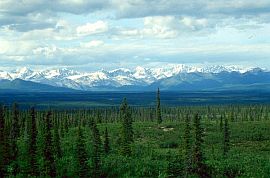 His old Suburban clattered over the familiar potholes of the dirt road leading to the compound. Cresting the final hill, Doctor Jameson could make out the three trailers arranged in a circle and the canopy-covered sitting-area off to the left. Beyond that was the beginning of the eastern taiga -- predominately larch mixed with pine and cedar -- and beyond that, on the other side of the Lena River, was the Verkhoyansk Mountain Range arcing west from both north and south. To the north, the plateau stretched to the Arctic -- infinity, he called it.
His old Suburban clattered over the familiar potholes of the dirt road leading to the compound. Cresting the final hill, Doctor Jameson could make out the three trailers arranged in a circle and the canopy-covered sitting-area off to the left. Beyond that was the beginning of the eastern taiga -- predominately larch mixed with pine and cedar -- and beyond that, on the other side of the Lena River, was the Verkhoyansk Mountain Range arcing west from both north and south. To the north, the plateau stretched to the Arctic -- infinity, he called it.For practical reasons, including proximity to the mining road, they'd settled in a barren rocky area in the midst of a tundra-taiga zone, east of the Yenisey river, 150 miles from Norilsk, the second largest city in the world above the Arctic Circle. Involuntarily, he became immersed in the bush and loved the freedom and simplicity of it, the cleanness of the air -- far away from the heavy industrial-mining cities -- and the pleasant smells wafting in from the forest. No heavy big-city traffic jams; no noisy, dirty streets; no crime. His knowledge of the Cambrian Period was second to none in paleontological circles, so his presence was earnestly requested by the organizers. He couldn't refuse. At first, however, he dreaded this project, fearing the worst Siberia had to offer. And though chiding himself, he couldn't help but agonize over the night spots, fancy restaurants, gallery openings, and upscale bars he would miss. As well, it'd been a long time since field work had held any excitement and romance, preferring instead the routine and comfort of campus life. Nonetheless, he had to admit he was intrigued by the prospect of examining fresh Cambrian finds, you never knew when something as yet unknown and bizarre would turn up. And the permafrost had been insulating the site for millions of years. After arriving by plane into Norilsk -- one of the ten most polluted cities in the world -- setting up camp with colleagues, and spending a few nights marveling at the broad uncorrupted starfield, he felt a calmness and relaxation he hadn't experienced in years, if at all. He was hooked. The day was warm, summer in mid-stride, not a cloud in the sky; the rough Putorana Mountains -- the remnants of the Siberian Traps -- just behind to his left. Off to the north, about a mile above camp, south of Taymyr Peninsula, he could see Dickerson's Divot, as they jokingly referred to the large impact crater of a million years ago, radiometrically estimated. It was about seven-tenths of a mile across, which meant that the asteroid itself probably wasn't more than eighty to a hundred feet in diameter. One night over pizza and beer, Doctor Dickerson, lead paleontologist from the University of Colorado, had been informed of the crater by a geologist friend. That entire sector has been thoroughly scrutinized in detail over the decades due, not only to the expansive gas and oil industry, but also to the mining of vast amounts of nickel [second largest deposit in the world, currently], as well as copper, cobalt, and especially platinum, so topographic maps were plentifully available. During the course of a routine survey of satellite images, a cleared rocky area with a deep depression in the center of it, surrounded by forest, stood out quite dramatically.
Indeed, ego and sheer scientific curiosity finally pushed him over the edge. The opportunity to work in such a remote part of the world, far away from government oversight and distractions by the media, let alone the possibility of unique groundbreaking discoveries, had been too much to pass up. Dickerson learned at the beginning of his career that pertinent information almost casually revealed during a serendipitous meeting, like with his geologist friend, had something of a mystical source and therefore had to be acted upon and investigated.
The Feast of Bacchus -- 1628-29 Diego Velazquez
***************************** "Art washes away from the soul the dust of everyday life.""I'd like to live as a poor man with lots of money." "I am always doing that which I cannot do, in order that I may learn how to do it."
***************************** It's been snowing for days and I'm stuck at home. It's fine, I actually enjoy it. But if cabin fever has you in its grip and you're looking for some way to blow off steam, I recommend a vicarious trip down mayhem lane with the following three movies, any one of which should do: Taken with Liam Neesan; Man On Fire with Denzel Washington; and Payback with Mel Gibson. And of course, there's always the classic standby: The Outlaw Josie Wales with none other than Clint Eastwood and Chief Dan George. Get a case of beer and kick back. You'll feel better afterwards.
***************************** DaveThe snow had been falling steadily for three days. Dave Flattery decided to work from home, it was just too much to try to drive, even with his four-wheeler. He worked in advertising and could accomplish as much at home as in his office. Misses Flattery was a school teacher, her school was closed and probably would be for days to come. So she busied herself in the kitchen making pies, a pasttime that calmed her nerves and made life bearable. Their son, age 18, was away at college, his freshman year. Their daughter, Ellie, age nine, was home and getting fidgety. Dave decided to take a break and go outside with Ellie to build a snowman on the front yard. As they were rolling up the ball of snow for the head, he grabbed his chest and collapsed, face down. Ellie ran in to tell her mommy. After checking her husband, she called for an ambulance. But due to the snow, they didn't arrive for a good ten minutes. By then, he was dead -- heart attack. Their son came home for the funeral, and sadness and crying filled their lives. Two relatives, a sister of Misses Flattery and an aunt, stayed with them, trying to console them, or at least keep them company, cook food, do whatever they could to help through this period of grief. It was an awful, tragic time for the Flatterys.
Moments passed as he watched others, called by a receptionist, go through a doorway at the back of the room. He squeezed the soft leather arms and thought to confront the receptionist, an elderly woman wearing a flowered dress, to ask her just what the hell was going on, when he heard his name over an intercom. He froze, terrified, adrenaline raced through his body. He continued sitting, his name rang out again, more demanding. The receptionist gave him a sharp look; he stood to approach her, sitting behind a large oak desk, a small lamp off to its side. As he neared, she pointed at the door. He gulped, sweat beading on his forehead, and pushed the door open. As he did so he couldn't help but notice that his clothing, the clothes he'd been wearing last, changed into a soft yellow caftan, and his galoshes into a pair of sandals. Amazed, he stood examining his newfound duds when a voice said, "Mister Flattery? Would you come this way, please?" He jerked his head up. Standing not ten feet away was an imposing man, well over six-feet tall, sporting a thick black beard, eyes of green, long hair flowing down his back, and a tiny scar over his left eyebrow. He too was wearing a caftan, only his was ornate with embroidery and what might've been epaulets on his shoulders. In one hand he held a thick red book which he now opened. Dave approached to within a few feet, almost coming to attention, his military training kicking in. "Dave, may I call you Dave?"
“Of all forms of caution, caution in love is perhaps the most fatal to true happiness.” “To fear love is to fear life, and those who fear life are already 3-parts dead.” “The time you enjoy wasting is not wasted time.”
*****************************
***************************** 
|
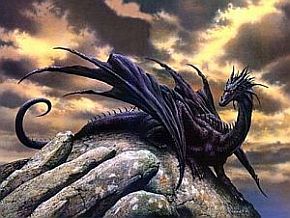
 One of my favorite movies of all time -- I have many -- is The Fifth Element with Bruce Willis and Milla Jovovich -- The Perfect Being. Of course. I've lost count of how many times I've watched it. It's a classic. She has her own
One of my favorite movies of all time -- I have many -- is The Fifth Element with Bruce Willis and Milla Jovovich -- The Perfect Being. Of course. I've lost count of how many times I've watched it. It's a classic. She has her own  I would just like to go on record as stating unequivocally that when Angie Harmon played Miss Carmichael on the TV show Law & Order, she was easily the most beautiful woman on television, followed closely by Elizabeth Rohm. In fact, Law & Order had a whole slew of beautiful female ADAs. But Angie Harmon -- positively stunning -- her rich jet-black hair, those Cherokee eyes, that dimple on her chin, and that husky voice -- yum. As a friend of mine used to be fond of saying, "Too much sugar for a dime."
I would just like to go on record as stating unequivocally that when Angie Harmon played Miss Carmichael on the TV show Law & Order, she was easily the most beautiful woman on television, followed closely by Elizabeth Rohm. In fact, Law & Order had a whole slew of beautiful female ADAs. But Angie Harmon -- positively stunning -- her rich jet-black hair, those Cherokee eyes, that dimple on her chin, and that husky voice -- yum. As a friend of mine used to be fond of saying, "Too much sugar for a dime." And, if you've never seen Elektra with Jennifer Garner, you're truly missing a wonderfully moving experience. She gives the character a depth and earthiness we don't usually expect in a superhero. I believe she could actually do all those things. Gorgeous, athletic, and no other woman walks like her. God bless her.
And, if you've never seen Elektra with Jennifer Garner, you're truly missing a wonderfully moving experience. She gives the character a depth and earthiness we don't usually expect in a superhero. I believe she could actually do all those things. Gorgeous, athletic, and no other woman walks like her. God bless her. I've watched the movie Enchanted half a dozen times. It's perfectly enchanting. Amy Adams is totally believable as a princess lost in New York city. The park scene gives me rushes, all the way through. I remember when I was a boy watching 40's musicals on TV, I wish there were more of them. Way better than vampires and zombies and werewolves and the end of the world grim action pics. Does anyone remember Rambo smiling, even once? If you want to listen to the song That's How You Know on youtube,
I've watched the movie Enchanted half a dozen times. It's perfectly enchanting. Amy Adams is totally believable as a princess lost in New York city. The park scene gives me rushes, all the way through. I remember when I was a boy watching 40's musicals on TV, I wish there were more of them. Way better than vampires and zombies and werewolves and the end of the world grim action pics. Does anyone remember Rambo smiling, even once? If you want to listen to the song That's How You Know on youtube, 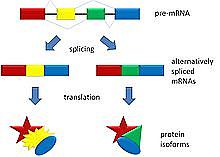 Due to the now familiar process of spontaneous alternative splicing and shift-merging of genes, a particular configuration built upon sub-chain connections is able to recombine into one of very different character -- a protein isoform -- and subsequent expression. That is, the one-gene-one-protein hypothesis of old is no longer correct. Such proteins include splicing activators that promote the usage of a particular splice site, and splicing repressors that reduce the usage of a particular site. This process is seen as the prime method for faster adaption to new environments and therefore a very important step in evolution for the emergence of multicellular organisms.
Due to the now familiar process of spontaneous alternative splicing and shift-merging of genes, a particular configuration built upon sub-chain connections is able to recombine into one of very different character -- a protein isoform -- and subsequent expression. That is, the one-gene-one-protein hypothesis of old is no longer correct. Such proteins include splicing activators that promote the usage of a particular splice site, and splicing repressors that reduce the usage of a particular site. This process is seen as the prime method for faster adaption to new environments and therefore a very important step in evolution for the emergence of multicellular organisms.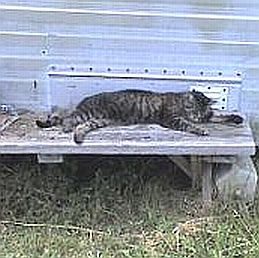



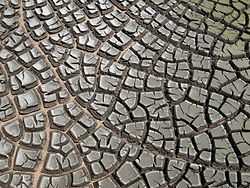
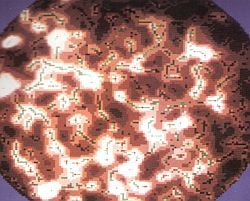
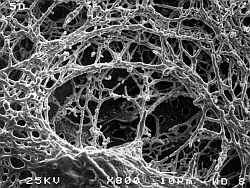
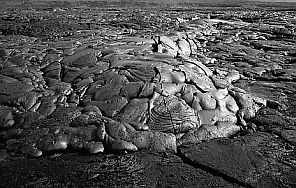
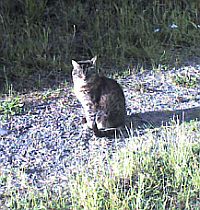
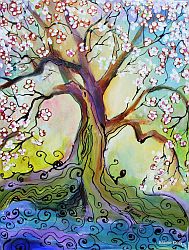

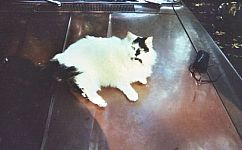
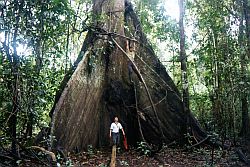 I stayed the night. Most everyone walked about or sat around the campfire. It was very casual. They ignored me in general, which made me feel like one of the family. With some of the men about my age, I shared a long bamboo pipe. When I asked what was in it, they laughed. After a few puffs, the vividness and texture of my surroundings intensified remarkably. Dogs played around the fire-light. And all the children, of which there were many. They fed me. I have no idea what it was -- sweet-smelling meat and some kind of yellowish tubor -- but it tasted wonderful, each and every bite, the flavors mingling, blending into a single meta-flavor creating a grandiose synergy, then gently separating, disintegrating into distinctive components, acutely, with meaning, only to merge again, intimately, invading my senses, all my senses. The delicious food and sensuous convivial surroundings absorbed my identity, absorbing my very essence into the matrix of all that is. Later, lying on my new sleeping bag near the fire, gazing at the stars, listening to the soft rumbling of drums, I curled up and fell asleep.
I stayed the night. Most everyone walked about or sat around the campfire. It was very casual. They ignored me in general, which made me feel like one of the family. With some of the men about my age, I shared a long bamboo pipe. When I asked what was in it, they laughed. After a few puffs, the vividness and texture of my surroundings intensified remarkably. Dogs played around the fire-light. And all the children, of which there were many. They fed me. I have no idea what it was -- sweet-smelling meat and some kind of yellowish tubor -- but it tasted wonderful, each and every bite, the flavors mingling, blending into a single meta-flavor creating a grandiose synergy, then gently separating, disintegrating into distinctive components, acutely, with meaning, only to merge again, intimately, invading my senses, all my senses. The delicious food and sensuous convivial surroundings absorbed my identity, absorbing my very essence into the matrix of all that is. Later, lying on my new sleeping bag near the fire, gazing at the stars, listening to the soft rumbling of drums, I curled up and fell asleep.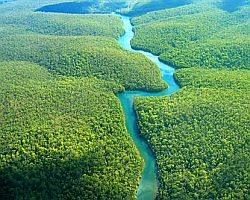 According to the map and my trusty compass, I was nearing the
According to the map and my trusty compass, I was nearing the 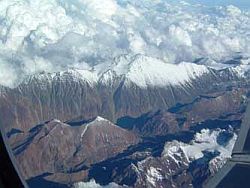 To state that the mountain scenery was breathtaking and spectacular doesn't really cut it. How are they so? I've seen and been amongst other mountain ranges -- Rockies, Chugach, Olympics -- and they're all wondrous and awesome, it's the nature of mountains. But the Andes struck a chord I hadn't known before, an ancientness, a wildness and an aliveness. Aloof and disdainful, they offered nothing, demanded everything. The only way to know them is to go out to them. And to do that is like going back in time 20,000 years.
To state that the mountain scenery was breathtaking and spectacular doesn't really cut it. How are they so? I've seen and been amongst other mountain ranges -- Rockies, Chugach, Olympics -- and they're all wondrous and awesome, it's the nature of mountains. But the Andes struck a chord I hadn't known before, an ancientness, a wildness and an aliveness. Aloof and disdainful, they offered nothing, demanded everything. The only way to know them is to go out to them. And to do that is like going back in time 20,000 years.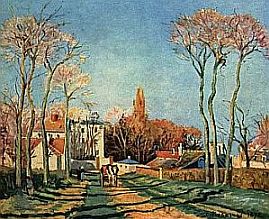

 Effect follows cause according to Aristotelian logic and ordinary reason, and our intuition tells us that in between, some time must happen -- duration -- no matter how brief. However, according to
Effect follows cause according to Aristotelian logic and ordinary reason, and our intuition tells us that in between, some time must happen -- duration -- no matter how brief. However, according to 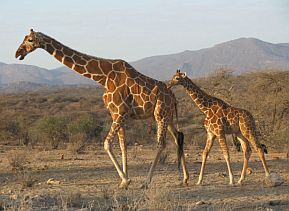
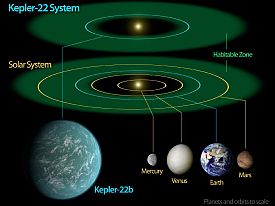
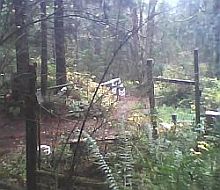 I drove back to where I've been staying in town, and the following morning, after buying some beer, went out to the woods, to my home. And so, life goes on, they say. But sometimes one would like it to make sense. Nonetheless, I believe my friend's death may have been a final straw of sorts, a trigger. Or simply a message telling me what to do. A shift in perspective.
I drove back to where I've been staying in town, and the following morning, after buying some beer, went out to the woods, to my home. And so, life goes on, they say. But sometimes one would like it to make sense. Nonetheless, I believe my friend's death may have been a final straw of sorts, a trigger. Or simply a message telling me what to do. A shift in perspective.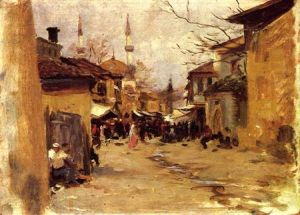
 Initially, Dickerson and a few graduate students sampled the age of the crater. Their estimates agreed with the geologist's records. However, they were surprised to discover that just beneath the asteroid debris field, the top strata was around 550 million years old, give or take. Two explanations were proffered: The force of the impact had obliterated the surface layer down to the depth of the crater -- between an eighth and a quarter of a mile -- or, the surface layer had been compressed and pushed down under the asteroid, most of which exploded off and out into the atmosphere. In either case, the Cambrian crust revealed itself. At the Chengjiang Maotianshan Shales of China and, most notably, the Burgess Shale site of British Columbia, among others, it was not uncommon to find such ancient sediments and shales residing near the surface.
Initially, Dickerson and a few graduate students sampled the age of the crater. Their estimates agreed with the geologist's records. However, they were surprised to discover that just beneath the asteroid debris field, the top strata was around 550 million years old, give or take. Two explanations were proffered: The force of the impact had obliterated the surface layer down to the depth of the crater -- between an eighth and a quarter of a mile -- or, the surface layer had been compressed and pushed down under the asteroid, most of which exploded off and out into the atmosphere. In either case, the Cambrian crust revealed itself. At the Chengjiang Maotianshan Shales of China and, most notably, the Burgess Shale site of British Columbia, among others, it was not uncommon to find such ancient sediments and shales residing near the surface.
 Dave was sitting in a plush, crushed-leather chair in what looked like a waiting room. He was bewildered and frightened. The last thing he remembered was playing with his daughter in the snow, an unbearable pain in his chest, falling into a drift, and then blackness. Now, here he was, but where and what was here?
Dave was sitting in a plush, crushed-leather chair in what looked like a waiting room. He was bewildered and frightened. The last thing he remembered was playing with his daughter in the snow, an unbearable pain in his chest, falling into a drift, and then blackness. Now, here he was, but where and what was here?